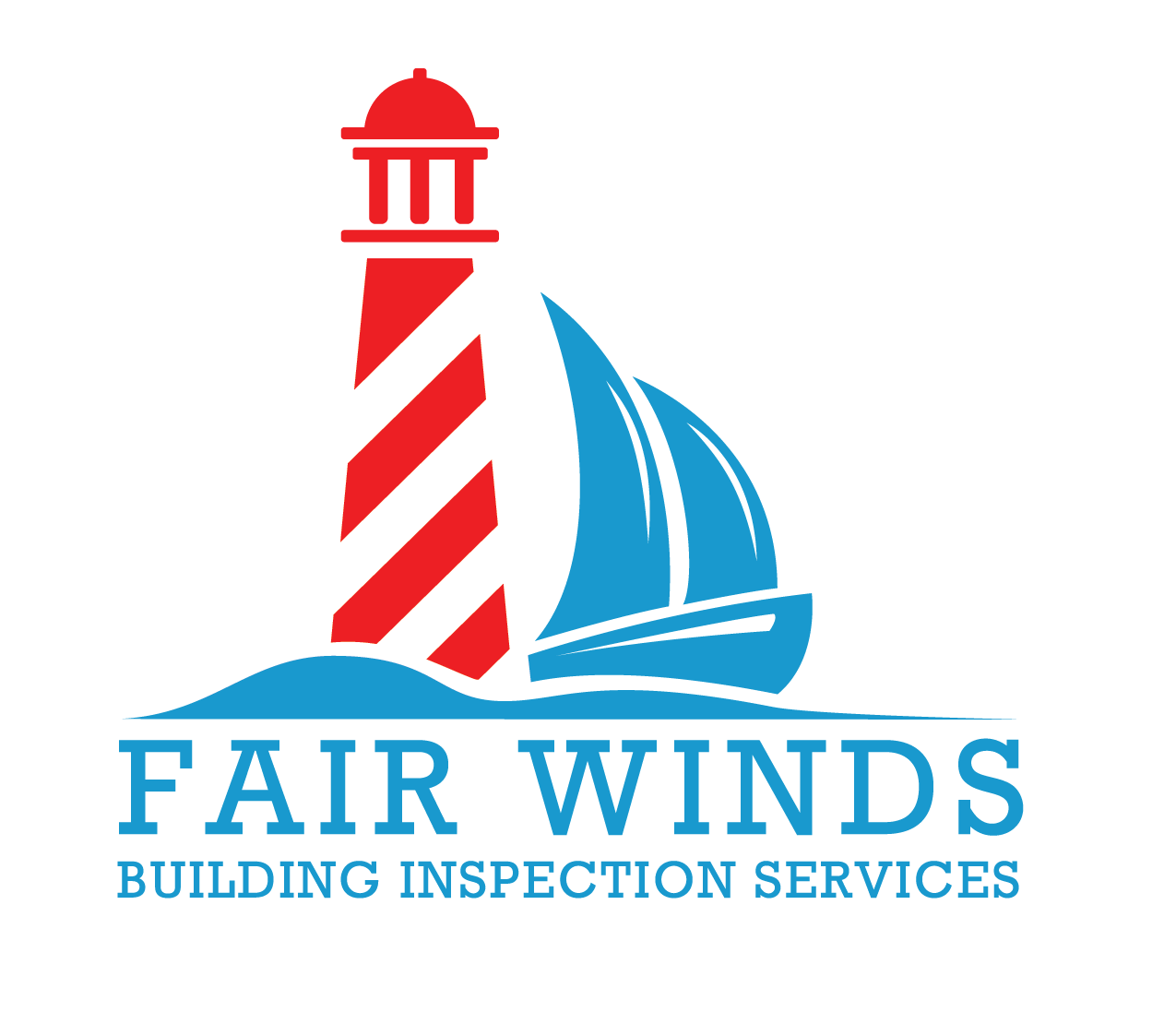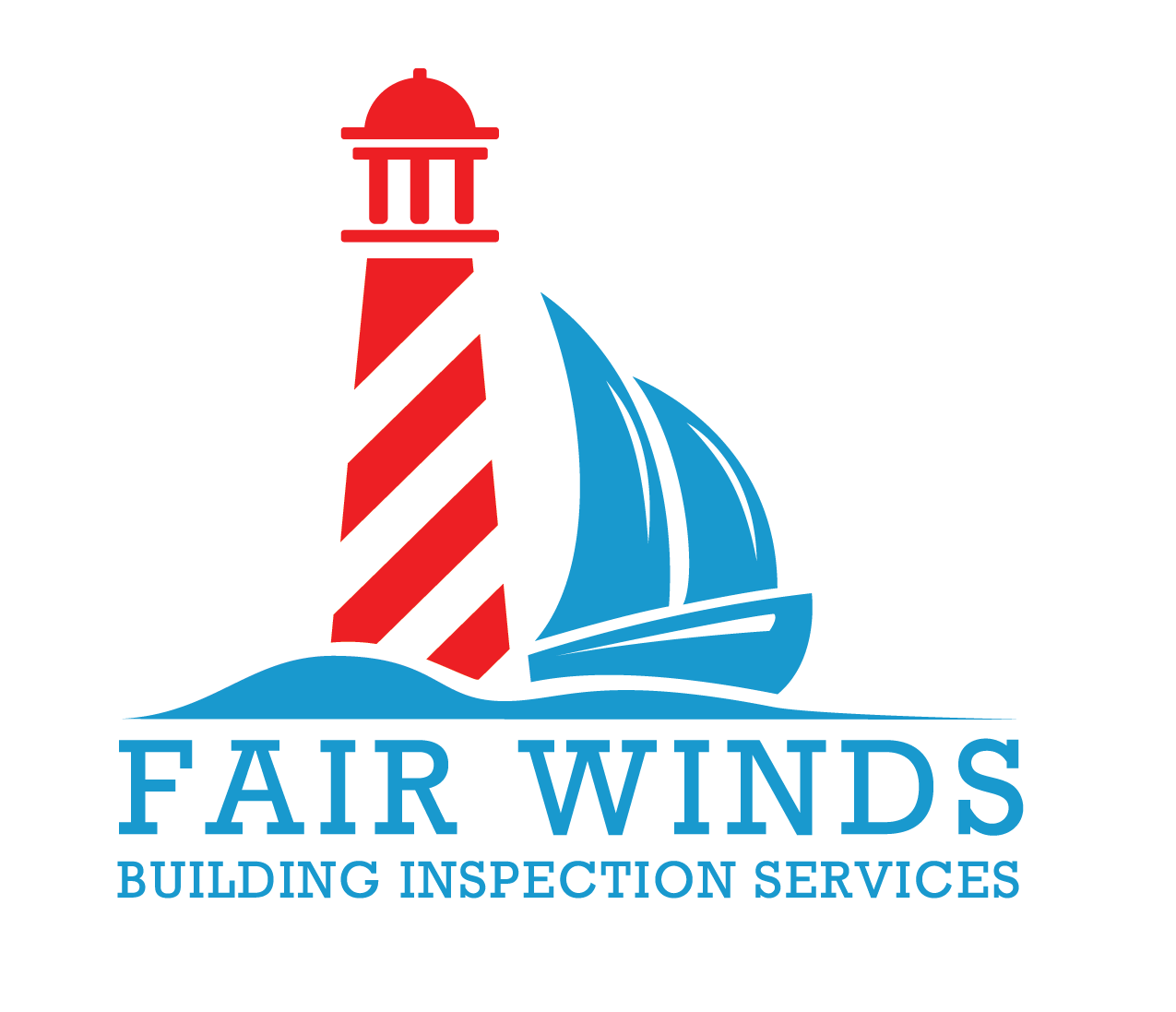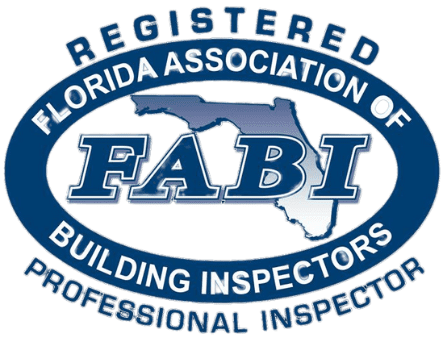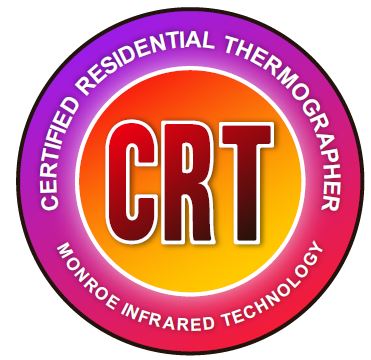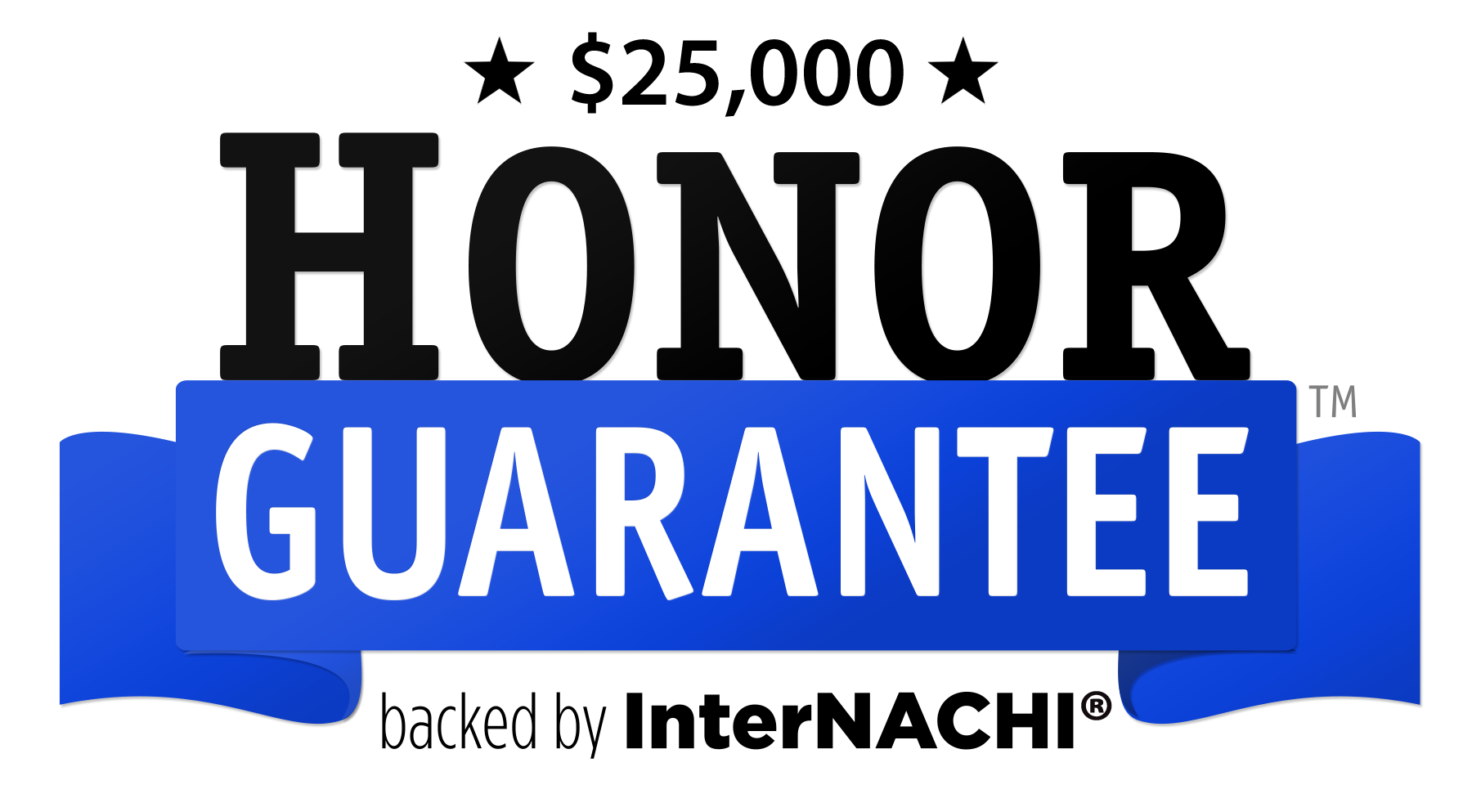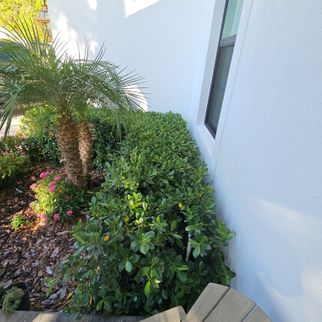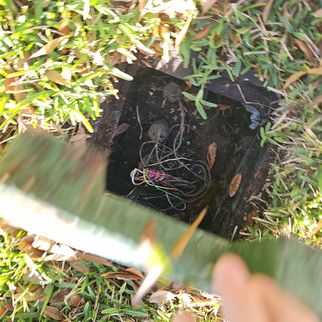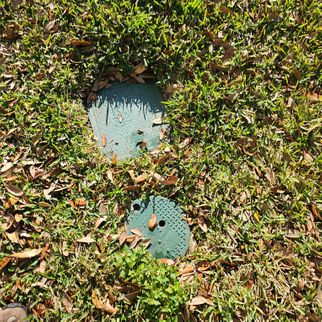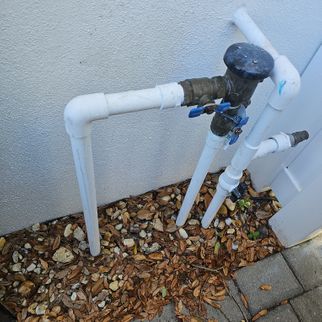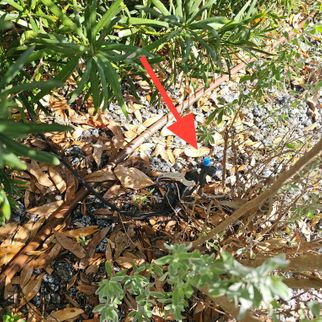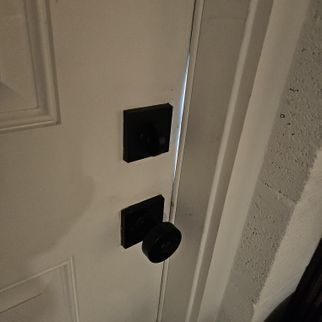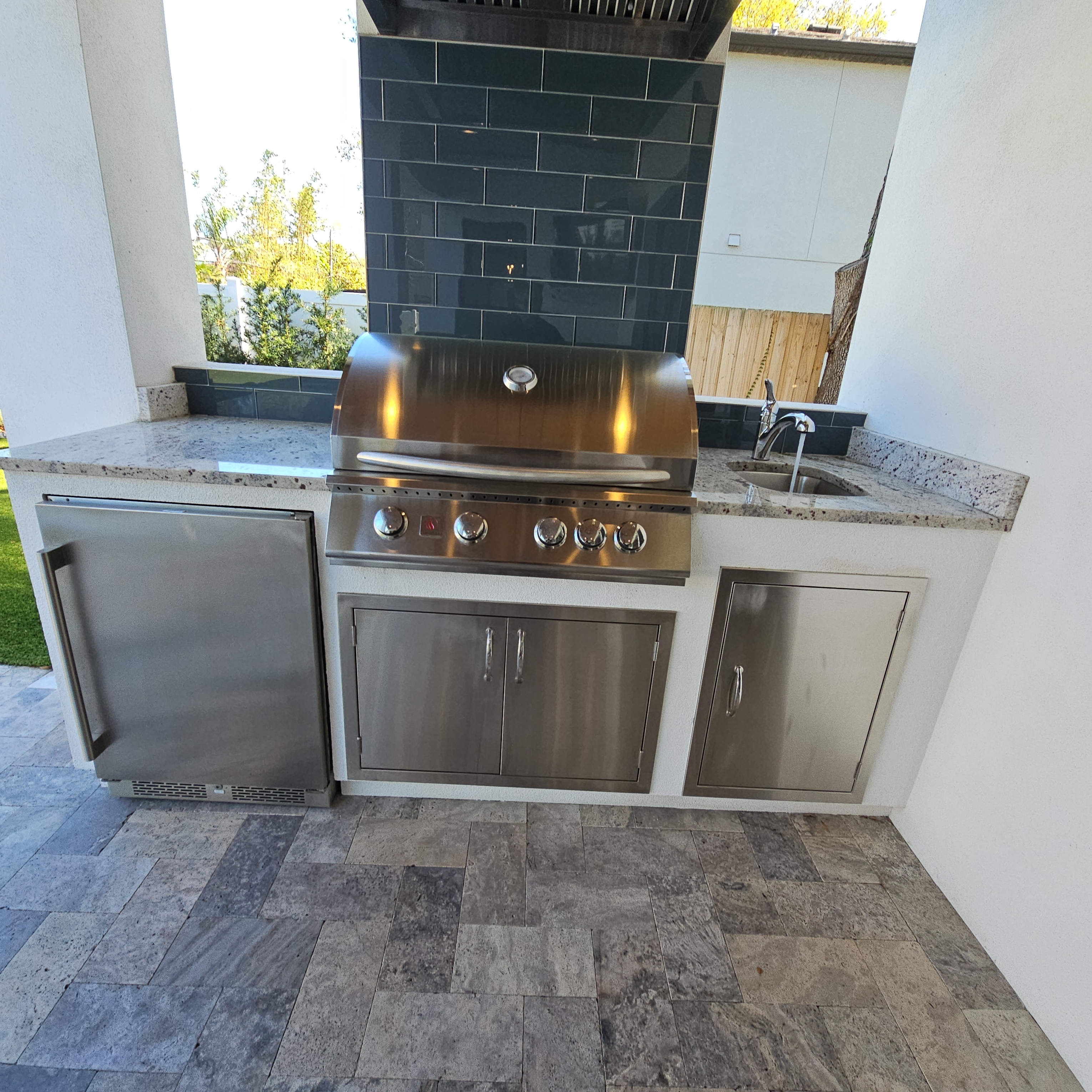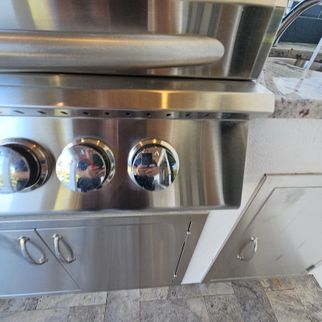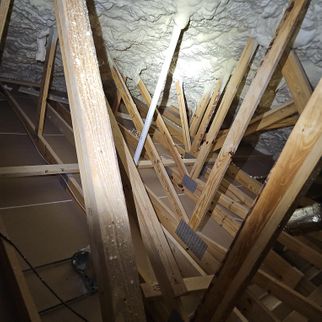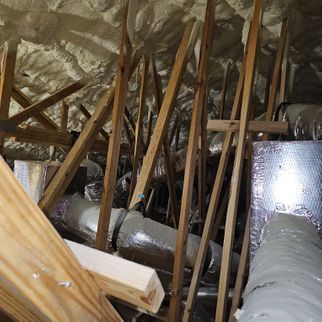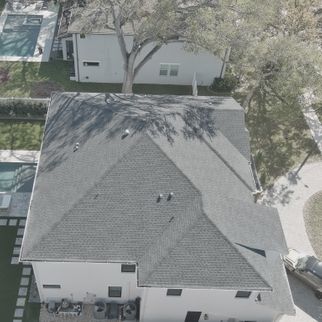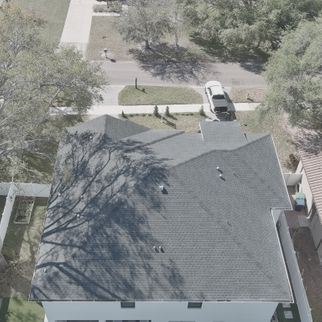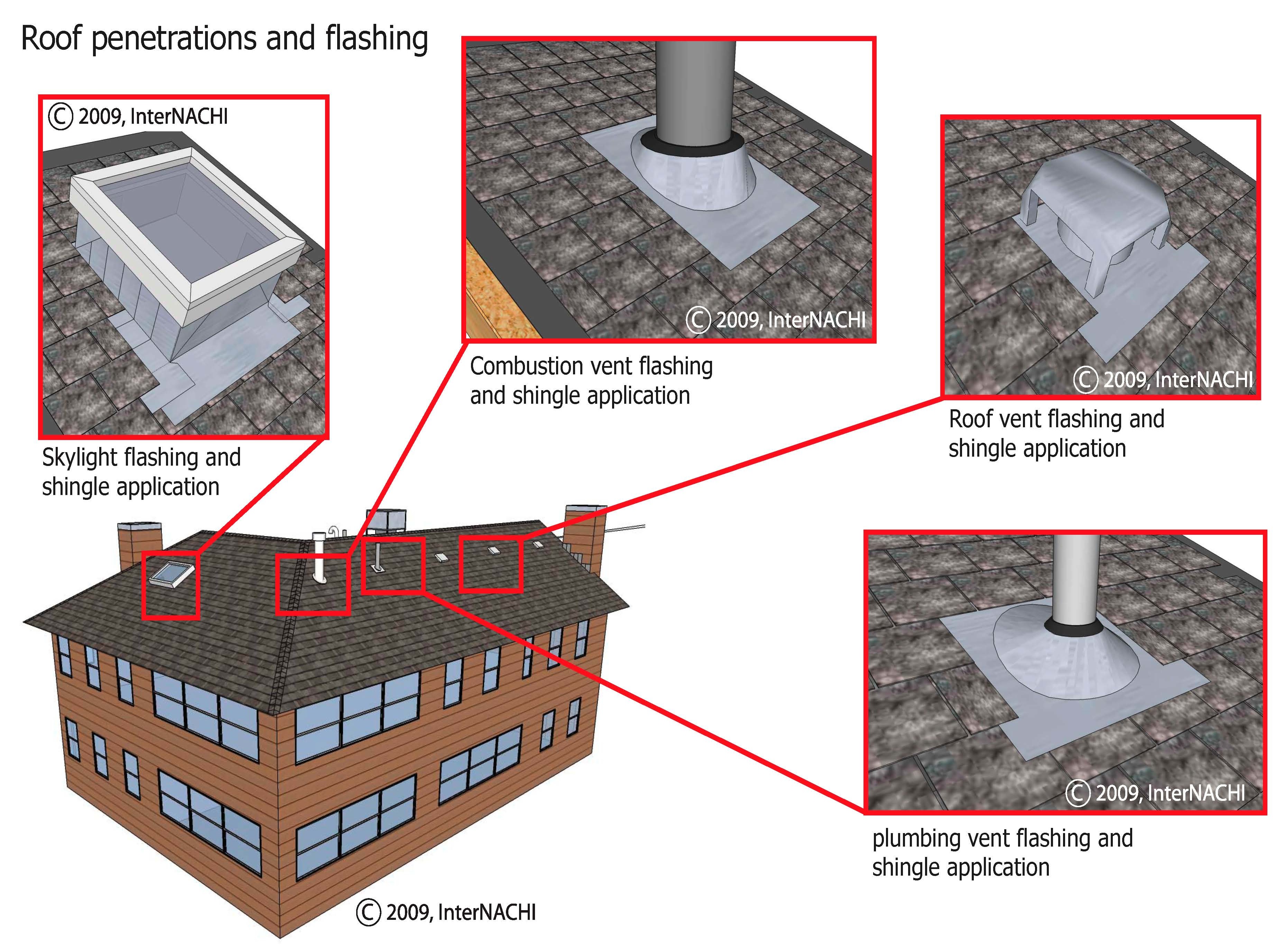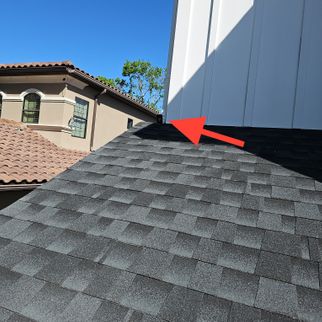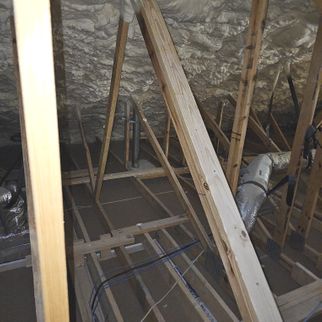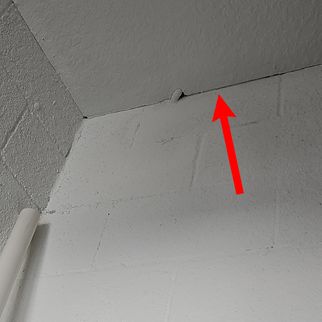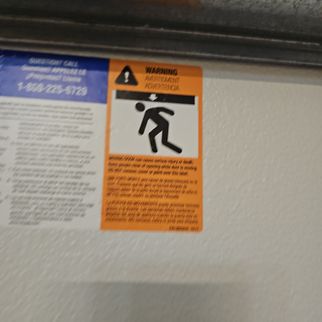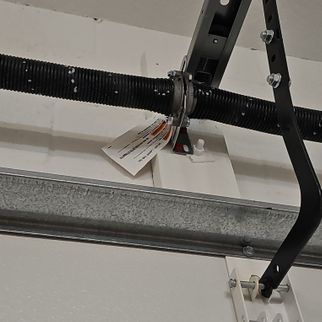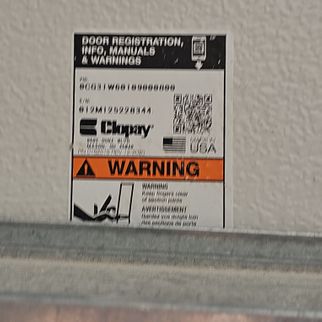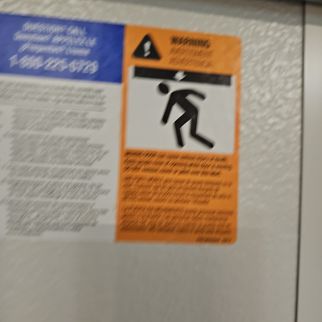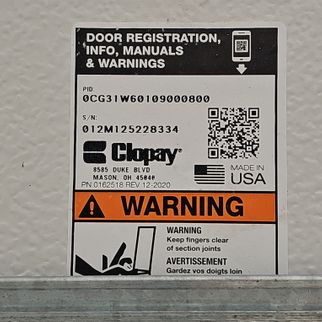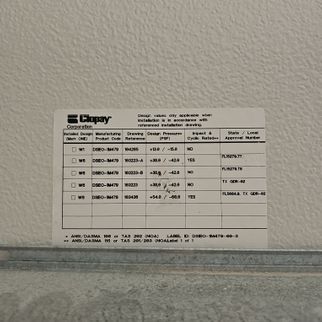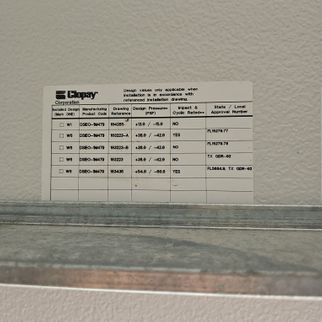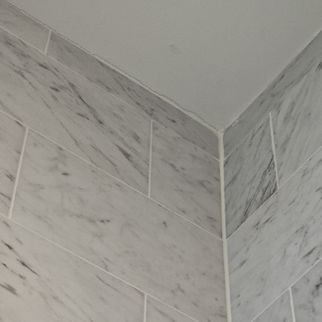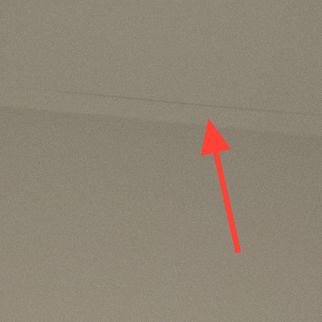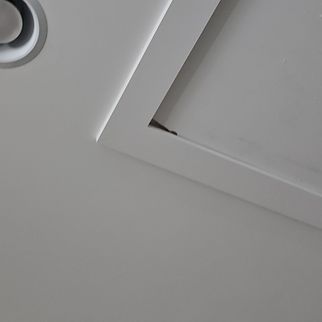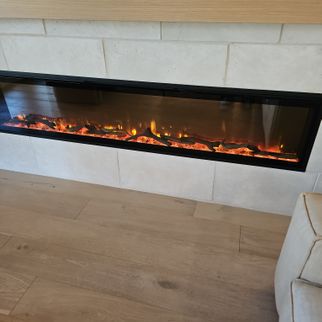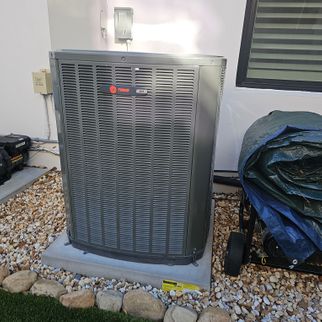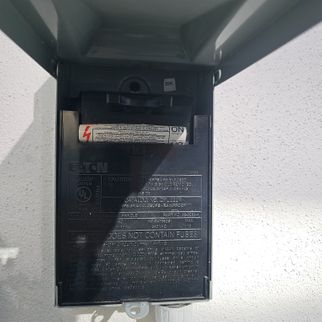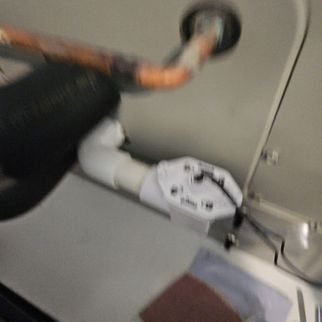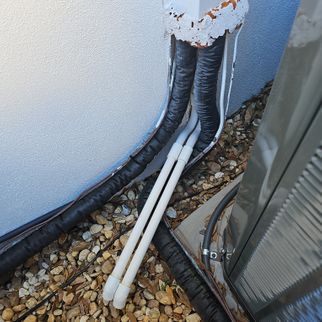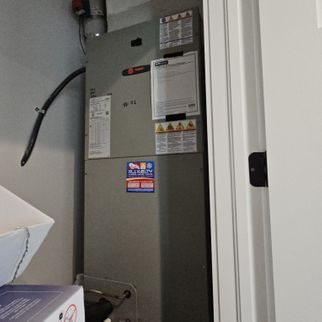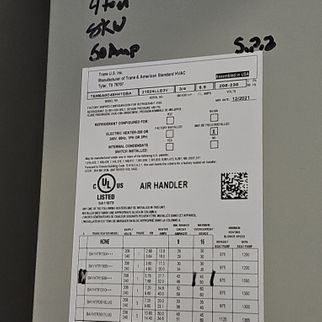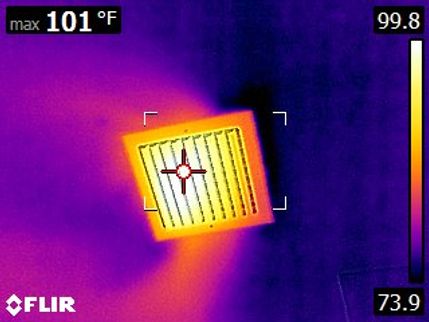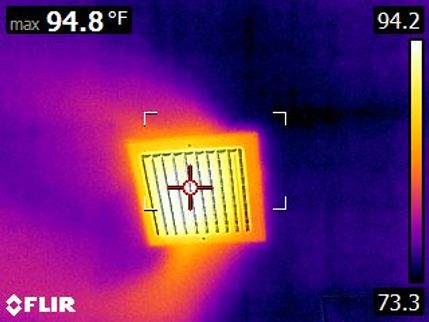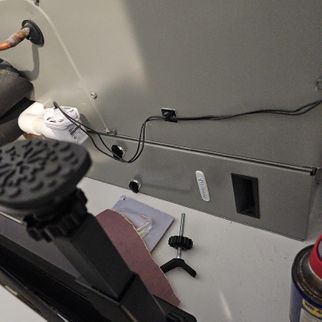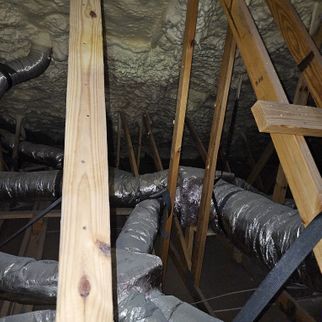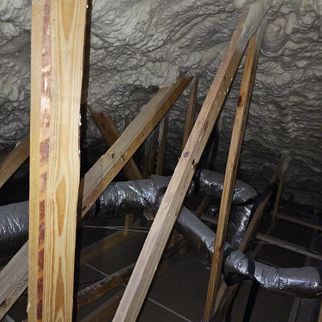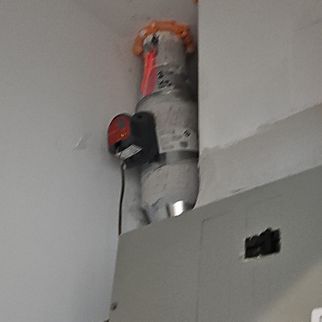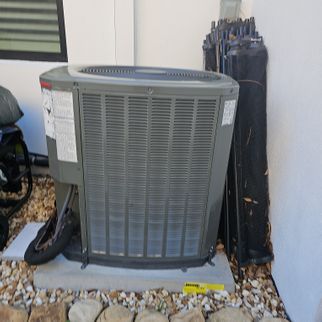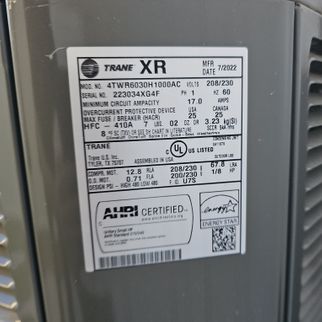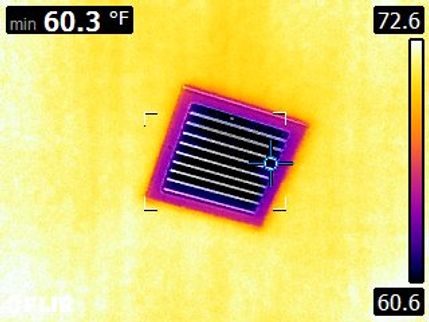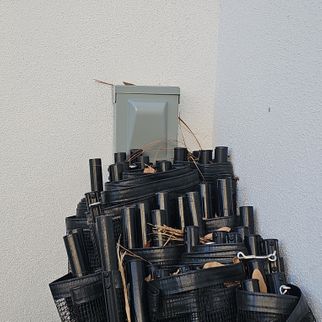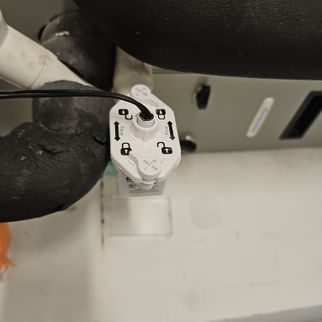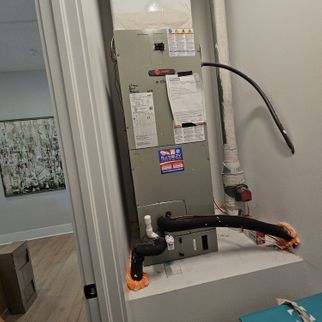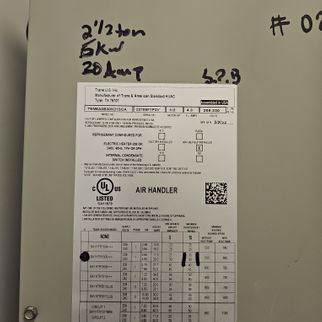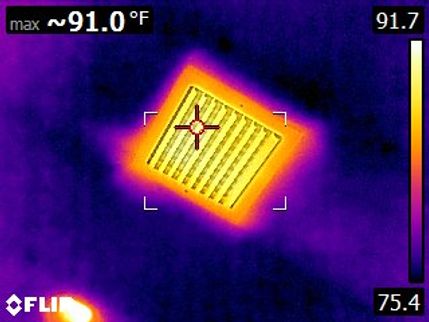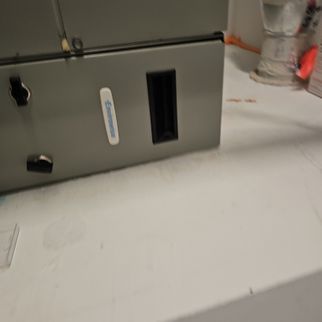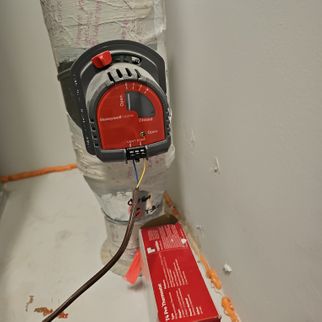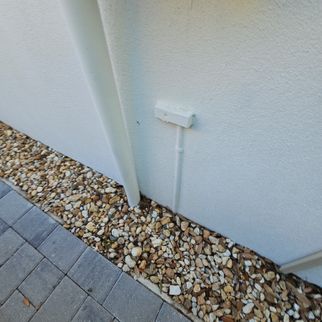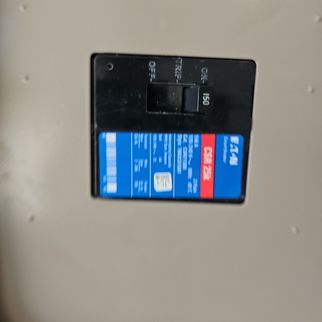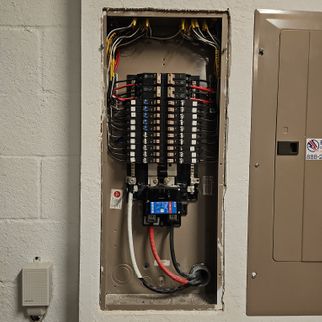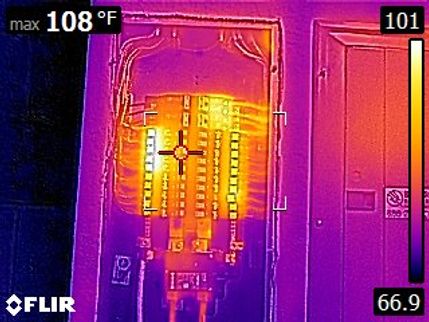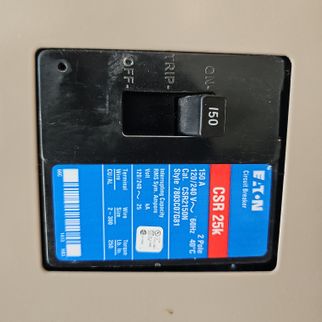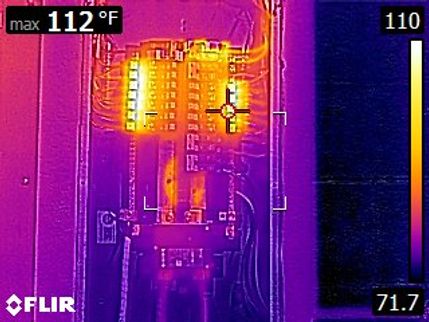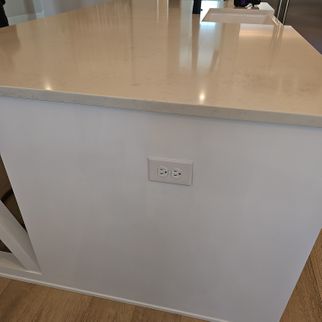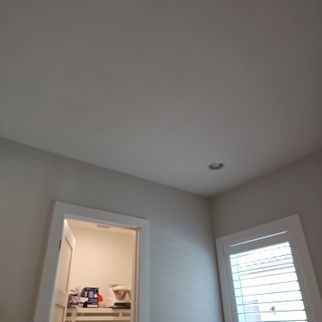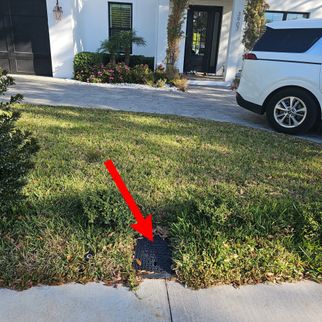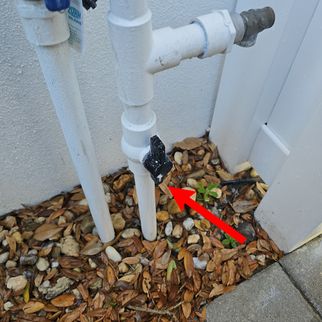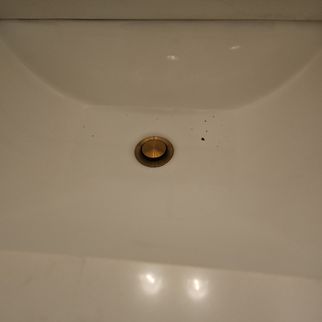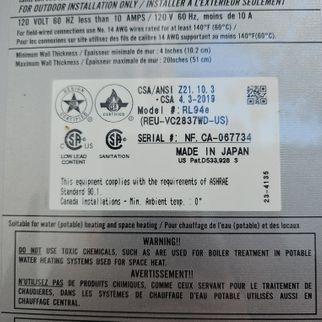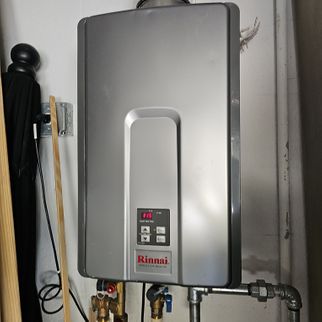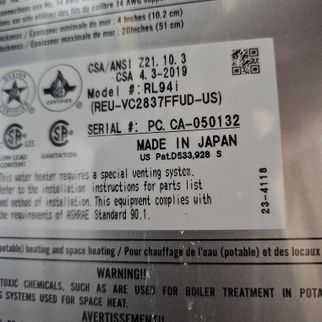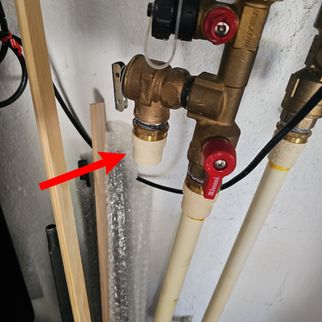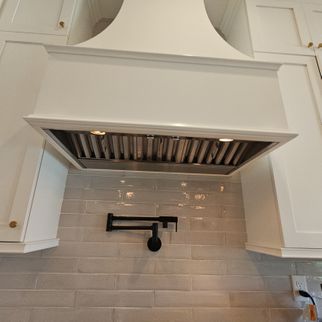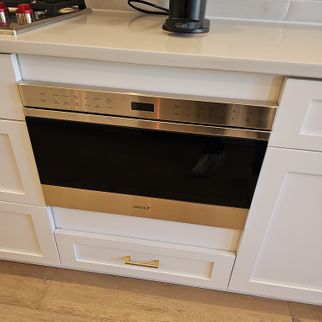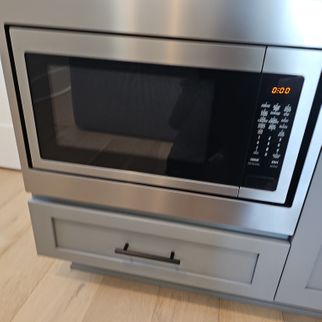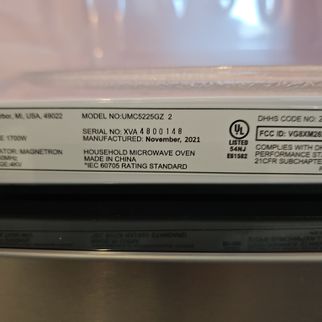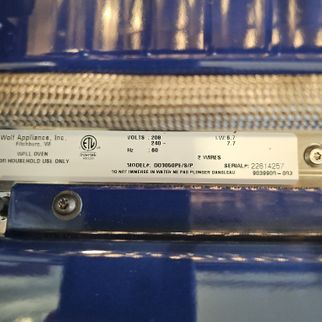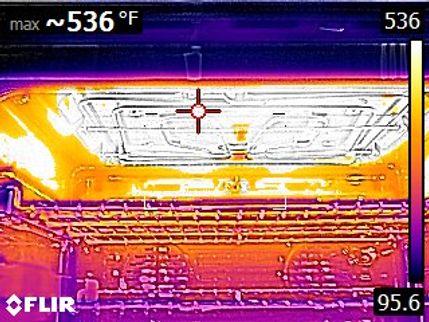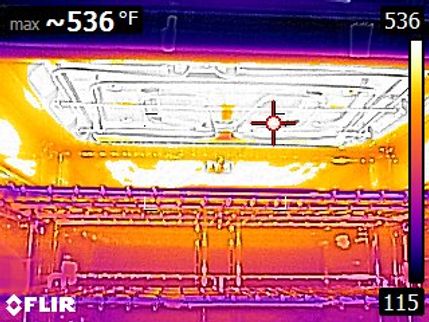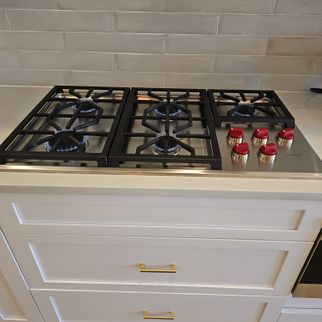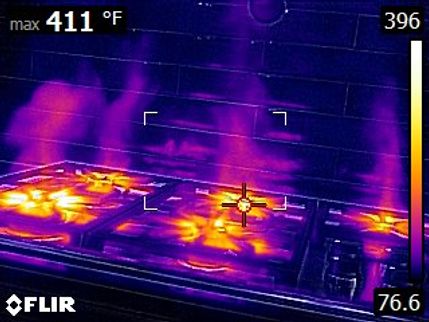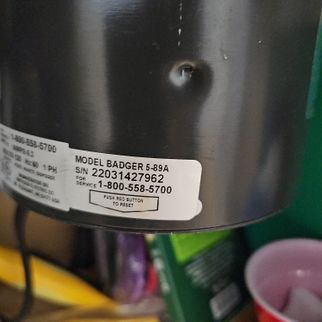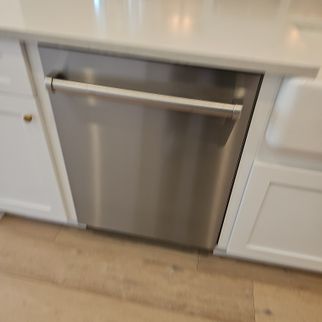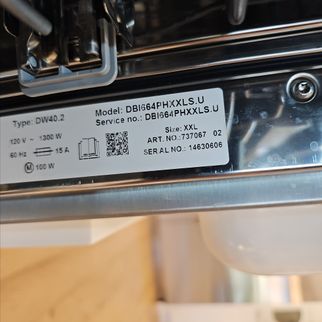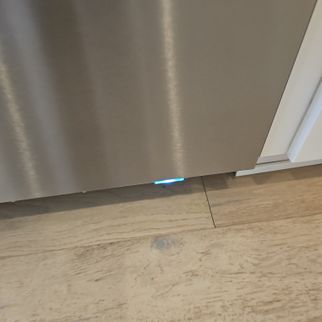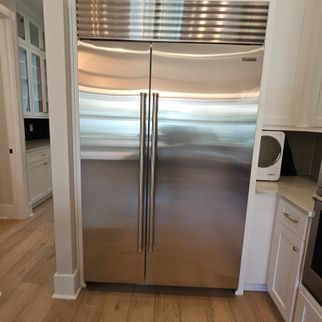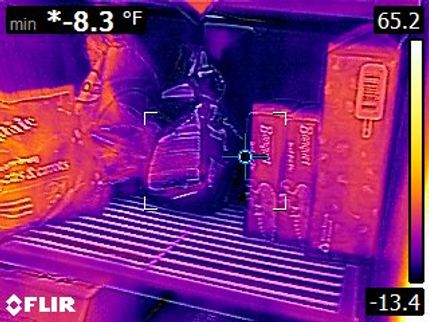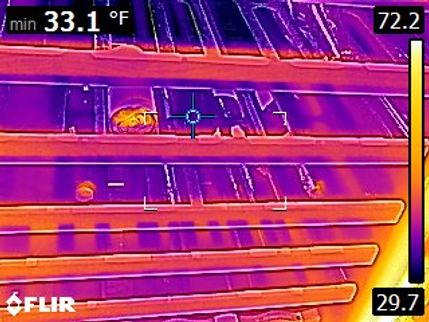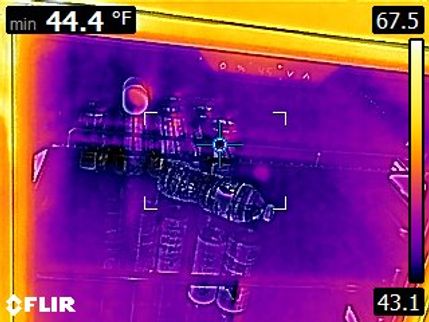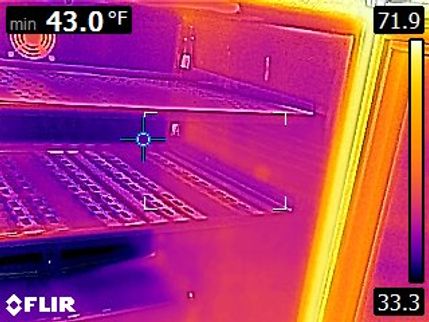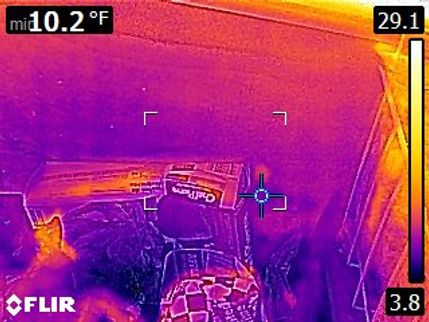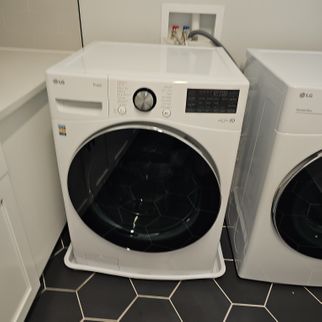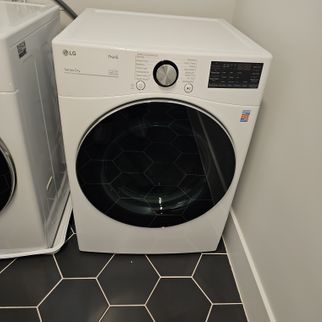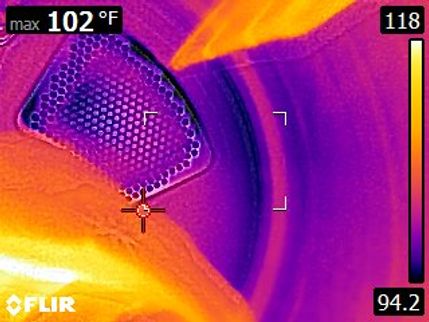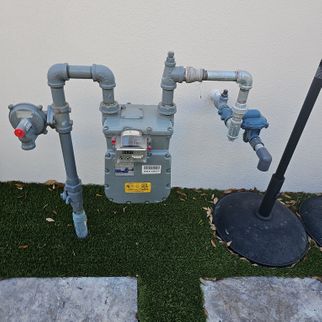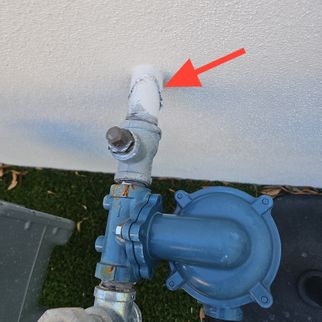
Sang Park, FL State License #HI12491, MRSA4846, JE319992
THIS REPORT IS FOR THE EXCLUSIVE USE OF THE CLIENT LISTED ON THIS REPORT. USE BY ANY OTHER PERSONS WITHOUT THE EXPRESS CONSENT OF FAIR WINDS BUILDING INSPECTION SERVICES, LLC. WILL BE A VIOLATION OF A CONTRACTUAL AGREEMENT AND WILL IMMEDIATELY NULLIFY THE REPORT.
The Scope and Purpose
This report outlines the scope and purpose of various inspections offered by Fair Winds Building Inspection Services. In addition to a standard home inspection, some clients may request ancillary inspections, such as a 4-Point Inspection, Wind Mitigation Inspection, or Swimming Pool Inspection. Your inspection may or may not include these ancillary inspections. The specific inspections performed for your property are listed in your agreement and detailed in the main part of this report. If you have any questions about which inspections were conducted, please refer to those sections or contact me directly.
Residential Inspection
The purpose of a home inspection is to help reduce the risk associated with the purchase of a structure by providing a professional opinion about the overall condition of the structure. A home inspection is a limited visual inspection and it cannot eliminate this risk completely. Some homes present more risks than others. I cannot control this, but I try to help educate you about the condition of the property during the inspection process. This is more difficult to convey in a report and one of many reasons why I recommend that you attend the inspection.
This inspection process followed the Florida Department of Business and Professional Regulation Standards of Practice (SOP). The SOP is provided at the end of the report for your reference. There may be comments made in this report that exceed the FL Standards of Practice; these comments (if present) were made as a courtesy to give you as much information as possible about the home. Exceeding the Standards of Practice will only happen when I feel I have the experience, knowledge, or evidence to do so. There should be no expectation that the Standards of Practice will be exceeded throughout the inspection. This inspection and report are not intended to be technically exhaustive. The observations in this report are the opinions of the home inspector. Other inspectors and contractors are likely to have some differing opinions. You are welcome to seek opinions from other professionals.
4-Point Inspection
A “four-point” inspection is a limited visual inspection of the residential structure. A four-point inspection is not exhaustive and is limited to a visual inspection of the four systems and components, which include: 1) the electrical panel and any visible wiring; 2) the plumbing system and any visible pipes; 3) the HVAC system and any visible connections; and, 4) the roof covering and any visible issues. This inspection is not as comprehensive as a full home inspection and is intended only to assess the general condition of these systems.
Wind Mitigation Inspection
A wind mitigation verification inspection is conducted to determine whether a home has specific features designed to withstand strong winds. This inspection is limited to the items listed on the Uniform Mitigation Verification Inspection Form and does not assess other home components. The purpose of this inspection is to verify wind-resistant construction features that may qualify the homeowner for insurance discounts. However, this inspection does not guarantee that a home can withstand severe weather events.
Swimming Pool and Spa Inspection
The purpose of pool and/or span inspection is a) to identify conditions that, in the professional opinion of the Inspector, are significantly deficient or b) to identify systems and components of the pool/spa that are at the end of their service lives in order to help reduce the risk associated with the pool/spa are included in the property. This inspection is a limited visual inspection and it cannot eliminate this risk. Some systems or components present more risks than others. We cannot control this, but we try to help educate you about what we don’t know during the inspection process. This is more difficult to convey in a report and one of many reasons why we recommend that you attend the inspection.
This inspection process followed the American Society of Home Inspectors (ASHI) Standards of Practice (SOP). The SOP is provided at the end of the report for your reference. There may be comments made in this report that exceed the Standards of Practice; these comments (if present) were made as a courtesy to give you as much information as possible about the home. Exceeding the Standards of Practice will only happen when I feel I have the experience, knowledge, or evidence to do so. There should be no expectation that the Standards of Practice will be exceeded throughout the inspection. This inspection and report are not intended to be technically exhaustive. The observations in this report are the opinions of the home inspector. Other inspectors and contractors are likely to have some differing opinions. You are welcome to seek opinions from other professionals.
Wood-Destroying Organism (WDO) Inspection
The Inspector, or a subcontractor, will conduct a visual inspection of the readily accessible areas of the Property, including attics and crawlspaces, where access is permitted at the time of inspection. The inspection may involve probing or sounding in unobstructed and accessible areas to identify any visual evidence of wood-destroying organisms. Wood-destroying organisms include termites, carpenter ants, carpenter bees, powder post beetles, old house borers, and wood-decaying fungi. This inspection does not cover mold, mildew, fungi other than wood-decaying fungi, or other non-insect wood-destroying organisms. The Inspector is not responsible for repairing any damage or treating any infestation.
Additionally, wood-destroying organisms may be present in concealed or inaccessible areas. If the written report states that no visible evidence of wood-destroying organisms was found, it does not guarantee that none exist. Damage may have already begun in areas that were not visible or accessible during the inspection. The inspection will be performed in accordance with Florida Department of Agriculture and Consumer Services standards, as outlined in Chapter 482.226 of the Florida Statutes and Chapter 5E-14.142(2)(c) of the Florida Administrative Code. These regulations include specific limitations, exceptions, and exclusions. If any conflict arises, Florida law will take precedence.
System/Component Update Inspection
This inspection is limited to evaluating the specific items documented in this report to determine whether any visually identifiable deficiencies persist. It does not assess the quality, professionalism, or appropriateness of any repairs made. Repairs to previously identified deficiencies should be performed by licensed and qualified professionals with expertise in addressing the specific issues identified. I recommend that the client obtain copies of all paid receipts and warranties for completed work to verify that the repairs were performed by licensed professionals.
This inspection process followed the Florida Department of Business and Professional Regulation Standards of Practice (SOP). The SOP is provided at the end of the report for your reference. There may be comments made in this report that exceed the FL Standards of Practice; these comments (if present) were made as a courtesy to give you as much information as possible about the home. Exceeding the Standards of Practice will only happen when I feel I have the experience, knowledge, or evidence to do so. There should be no expectation that the Standards of Practice will be exceeded throughout the inspection. This inspection and report are not intended to be technically exhaustive. The observations in this report are the opinions of the home inspector. Other inspectors and contractors are likely to have some differing opinions. You are welcome to seek opinions from other professionals.
The descriptions and observations in this report are based on a visual inspection of the property. I inspect the property without dismantling, damaging, or disfiguring and without moving furniture and interior furnishings. This inspection does not cover certain areas that are concealed, hidden, or inaccessible to view. Some systems cannot be tested during this inspection as testing risks damaging the system or the structure. For example, a heat pump is not generally tested if the outside temperature is above 85 degrees Fahrenheit according to most manufacturers' recommendations. The inspection procedures involved non-invasive investigation and non-destructive testing which would limit the scope of the inspection.
This inspection and report are not intended for city / local code compliance. During the construction process structures are inspected for code compliance by municipal inspectors. Framing is open at this time and conditions can be fully viewed. Framing is not open during inspections of finished homes, and this limits the inspection. All houses fall out of code compliance shortly after they are built, as the codes continually change. National codes are augmented at least every three years for all of the varying disciplines. Municipalities can choose to adopt and phase in sections of the codes on their own timetables. There are generally no requirements to bring older homes into compliance unless substantial renovation is being done.
How to Read This Report
Getting the Information to You
This report is designed to deliver important and technical information in a way that is easy for anyone to access and understand. If you are in a hurry, you can take a quick look at our "Summary Page” and quickly get critical information for important decision making. However, I strongly recommend that you take the time to read the full Report, which includes digital photographs, captions, diagrams, descriptions, videos and hot links to additional information.
The best way to get the layers of information that are presented in this report is to read your report online (the HTML version), which will allow you to expand your learning about your house. You will notice some words or series of words highlighted in blue and underlined – clicking on these will provide you with a link to additional information. The HTML version of this report also contains streaming videos. Short video clips often contain important information and critical context and sounds that can be difficult to capture in words and still pictures.
For the most reliable viewing experience, I recommend viewing the report on as large a screen as practical, as much detail can be lost on small devices like smart phones. For similar reasons, reports should only be printed in color to retain as much detail as possible and minimize misinterpretation of photographs.
This report can also be printed on paper or to a PDF document.
Chapters and Sections
This report is divided into chapters that parcel the home into logical inspection components. Each chapter is broken into sections that relate to a specific system or component of the home. You can navigate between chapters with the click of a button on the left side margin.
Most sections will contain some descriptive information done in black font. Observation narrative, done in colored boxes, will be included if a system or component is found to be significantly deficient in some way or if we wish to provide helpful additional information about the system or the scope of our inspection. If a system or component of the home was deemed to be in satisfactory or serviceable condition, there may be no narrative observation comments in that section and it may simply say “tested,” or “inspected.”
Observation Labels
All narrative observations are colored, numbered and labeled to help you find, refer to, and understand the severity of the observation. Observation colors and labels used in this report are:
- Repair:Repair and maintenance items noted during inspection. Please note that some repair items can be expensive to correct such as re-finishing hardwood floors, but are considered simply repair items due to their cosmetic nature.
- Improve:Observations that are not necessarily defects, but which could be improved for safety, efficiency, or reliability reasons.
- Recommended Maintenance:These are repair items that should be considered "routine home ownership items," such as servicing the furnace, cleaning the gutters or changing the air filters in the furnace.
- Due Diligence:thoroughly investigating the property to ensure there are no hidden issues or surprises.
- Description:Detailed description of various aspects of the property noted during the inspection.
- Limitation:Explanation of inspection limitations
- Note:Refers to a side information and/or any comments elaborating on descriptions of systems in the home.
- SOP:State of Florida Department of Business and Professional Regulation Standards of Practice for home inspection
- Homeowner's Responsibility:Your responsibilities as a homeowner
Summary Page
The Summary Page is designed as a bulleted overview of all the observations noted during inspection. This helpful overview is not a substitution for reading the entire inspection report. The entire report must be read to get a complete understanding of this inspection report as the Summary Page does not include photographs or photo captions.
Property Orientation
All locations of the exterior components were given as if you are standing outside and facing the front of the house. The bedrooms and the bathrooms were numbered, going clockwise from the garage entrance door and/or at the top of the stairs when multiple bedrooms/bathrooms existed on the same floor, i.e. bedroom 1, bedroom 2, and master bedroom.
How to Build a Repair Request
To see how to build a custom PDF summary list, built from any number of items in this report, please review this video. The idea behind this feature is to allow the readers of this report to build their own custom lists. These could be used as a tool for inspection responses, or for requesting re-inspection of specific items or for documenting work that has been completed as part of a pre-listing inspection.
No house is perfect. Anything in these categories should be addressed as soon as possible. Often, a serious problem can be corrected inexpensively. Not all deficiencies will be identified during this inspection. This inspection is not a guarantee or warranty of any kind. Unexpected repairs should still be anticipated. All recommended evaluations, repairs, or replacements shall be done by licensed contractors.
Homeownership is both a joyful experience and an important responsibility, so be sure to call on your Fair Winds Building Inspection Services, LLC to help you devise an annual maintenance plan that will keep your family and your investment safe for years to come. Thank you very much for letting us be of service to you and your loved ones.
Summary
Repairs
- P-1 Plumbing - Water Heater (Extrior wall):
The pressure relief valve on the water heater did not have a discharge pipe. A discharge pipe from the relief valve should be installed by a licensed plumbing contractor to safely and properly route any discharge to a floor drain or the home exterior.
- P-2 Plumbing - Water Heater (Garage):
The pressure relief valve on the water heater did not have a discharge pipe. A discharge pipe from the relief valve should be installed by a licensed plumbing contractor to safely and properly route any discharge to a floor drain or the home exterior.
- KB-1 Kitchen & Bathroom - Exhaust System:
The exhaust vent was observed to be loose during the inspection. This condition may create an entry point for wind-driven rainwater, potentially leading to moisture intrusion in the attic. I recommend extending the exhaust vent tube above the roofline to ensure proper expulsion of moist air. Additionally, any gaps around the vent should be sealed, and the vent secured properly to prevent further issues. A licensed roofing contractor should be consulted to perform the necessary repairs.
Residential Inspection Report
Exterior
Vegetation, Surface Drainage, Retaining Walls & Grading
Fence
Irrigation System
Walkways & Driveways
Wall Covering
Flashing and Trim
Eaves, Soffits and Fascia
Doors
Windows
Porches, Patios, Decks and/or Balconies
Playground
Outdoor Kitchen
Garage
General
Garage Floor
Ceiling, Walls & Firewalls in Garage
Garage Vehicle Door
Garage Vehicle Door Opener
Countertops & Cabinets
Interiors
Floors, Walls, and Ceilings
Doors
Windows
Smoke and Carbon Monoxide Detectors
Fireplace
Steps/Stairs
Cabinets
Electrical
General
Service Entrance Cable
Electric Meter & Base
Service Grounding & Bonding
Main Service Disconnect and Main Panel (Left)
Main Service Disconnect and Main Panel (Right)
Electrical Wiring
Switches, Fixtures & Receptacles
Ground Fault Circuit Interrupters (GFCI)
Arc Fault Circuit Interrupters (AFCI)
Plumbing
General
Water Supply System
Water Distribution Systems
Drain, Waste, & Vent Systems
Water Heater (Extrior wall)
Water Heater (Garage)
Building Info, Limitations, and Exclusions
General
Type of Building : Single Family (2-story)
Total Square Footage: 5314 (Gross area)
Year of Original Construction: 2022
Attending the Inspection: Buyer, Listing Agent
Occupancy: Furnished and occupied
All components and conditions which by the nature of their location are concealed, camouflaged, or difficult to inspect are excluded from the report. The report does not address
- concealed conditions, latent defects, consequential damages, and
- cosmetic imperfections that do not significantly affect a component’s performance of its intended function.
- the remaining life expectancy of systems and components.
- the causes of conditions and deficiencies.
- future conditions including but not limited to failure of systems and components.
- compliance of systems and components with past and present requirements and guidelines (codes, regulations, laws, ordinances, specifications, installation and maintenance instructions, use and care guides, etc.).
- the presence of environmental hazards including, but not limited to, allergens, toxins, carcinogens, electromagnetic radiation, noise, radioactive substances, and contaminants in building materials, soil, water, and air.
- whether items, materials, conditions, and components are subject to recall, controversy, litigation, product liability, and other adverse claims and conditions.
- the market value of the property and its marketability.
- the advisability of purchasing the property.
This home was furnished at the time of the inspection. Inspection of furnished homes presents some challenges as occupant belongings can obstruct visual inspection of and access to parts of the building. According to FL DBPR SOP, the inspection is limited to only those surfaces that are exposed and readily accessible. I did my best during the inspection to work around belongings to discover as much as possible about the house without moving or damaging personal property, however, the presence of personal items did limit the inspection. On your final walkthrough, or at some point after personal belongings have been removed, it is important that you inspect the exterior and interior portions of the residence that were concealed or otherwise inaccessible at the time of the inspection. Contact the Inspector immediately if any adverse conditions are observed that were not commented on in your inspection report.
Complimentary Services
Warranties
Each inspection performed comes with a 90 Day Structural and Mechanical Warranty that covers items that malfunction after the inspection and were confirmed to be in good working order by your inspector. It lasts for 90 Days or 22 Days after closing, whichever comes later, and carries a deductible of $0. Many items covered are the same items covered by your one-year warranty from closing, effectively making your deductible $0 on most claims with your Inspection from us! Click here to see the coverage terms.
Every single inspection we perform comes with a 5-Year Roof Leak Protection Plan ($500 Deductible) that covers the necessary repair for any new leak in your home’s roof system. Click here to see the coverage terms.
If you spot visible mold within the home after the inspection, MoldSafe will pay to remediate the issue! This coverage lasts for 90 Days and comes with a total aggregate limit of $2000 ($300 Deductible), which is automatically increased when you get a mold test with us. Make sure to address any known mold and moisture issues as noted in your inspection report as existing conditions or those stemming from a known issue are not covered. Click here to see the coverage terms.
Underground Sewer and Water lines are covered for 90 days from inspection ($300 Deductible) from issues like collapse and tree roots. While your inspector may recommend sewer camera inspections for some properties, on others where no drain backups or known issues are present this coverage will serve to protect against failures between your home and the municipal connection or well/septic systems. A sewer camera inspection with satisfactory results will automatically extend your coverage to 12 months. Click here to see the coverage terms.
We don’t just check your refrigerator to see if it’s cold...we check for known fire and safety hazards and deliver with free RecallChek reports for life with every full home inspection! Every repair with RecallChek is 100% FREE, Guaranteed! Click here to learn more.
Thermal Imaging
As human beings, we are limited to seeing light only in the visible spectrum called white light. This is the light that bounces off everyday objects whether that light is being emitted by our Sun or an artificial source such as a light bulb.
Without assistance from technology, we are unable to see surface temperature variances, and it is the ability to see these variances that allow us to more accurately identify potential, and immediate, problems in your home that would have otherwise been missed. The unique aspect of seeing surface temperature variances is that such variances can be caused by issues that may lie below the surface of a floor, behind a wall, or above a ceiling - places that are "out of sight" and are thus out of mind. Also, surface temperature variances can be caused by airflows such as warm air seeping under a door or cold air leaking from central air ducts. The air itself changes the surface temperature of objects that come in contact with the air. Surface temperatures can also be changed by living organisms such as mold, mildew, and household pests. Because these organisms often thrive in places that cannot be seen by the naked eye (such as behind walls), the use of infrared thermography allows us to pinpoint exactly where a problem area is in your home without the need for any immediate invasive damage to the structure of your home.
Finally, thermal imaging technology allows us to more accurately identify damage to your home's electrical systems. By being able to pinpoint "hot spots" in the electrical panel and household wiring, we can provide you and your electrician with detailed imagery that will help the electrician identify defects and make repairs more quickly to save you money. In short, infrared thermography is purposefully designed to provide you with a level of service that increases the speed by which many household problems can be identified, reduces the collateral damage required to fix those problems, increases the accuracy rate of correctly identifying problems, and helps you to catch small problems sooner so that don't become expensive or unmanageable problems that can affect your family's health or your financial wellbeing.
Temperature readings displayed on thermal images in this report are included as a courtesy and should not be wholly relied upon as a home inspection is qualitative, not quantitative. These values can vary +/- 2% or more of displayed readings.
Buy Back Guarantee
If your home inspector misses anything, InterNACHI will buy your home back.
And now for the fine print:
- It's valid for home inspections performed for home buyers or sellers by participating InterNACHI members.
- The home must be listed for sale with a licensed real estate agent.
- The Guarantee excludes homes with material defects not present at the time of the inspection, or not required to be inspected, per InterNACHI's Residential Standards of Practice.
- The Guarantee will be honored for 90 days after closing.
- We'll pay you whatever price you paid for the home.
- Click the logo below for full terms and conditions.
Please click here for details.
$25,000 Honor Guarantee
InterNACHI® will pay up to $25,000 (USD; maximum collective aggregate) for the cost of replacement of personal property lost (and not recovered, restituted, or insured) during an inspection and stolen by an InterNACHI®-certified member who was convicted of or pleaded guilty (or no contest) to any criminal charge resulting from the member's taking of the client's personal property. Claimant agrees that the exclusive venue for any action against InterNACHI® arising out of this Honor Guarantee is the District Court in Boulder County, Colorado. InterNACHI's Honor Guarantee is valid throughout the U.S. and Canada. Click here for details.
Exterior
Vegetation, Surface Drainage, Retaining Walls & Grading
Inspection Status: Inspected
Overgrown vegetation/trees were noticed around the house. Where trees, branches, and large shrubs can damage the roof covering and provide rodent access to the roof. A minimum 6-foot clearance is recommended as many rodents can jump 6 feet. All vegetation, including smaller landscaping such as grasses, flowers, and shrubs should be kept 1 foot off the house to eliminate contact which could trap moisture against the building. Pruning trees, branches, and/or vegetation away from the house is recommended.
Fence
Inspection Status: Not Inspected
This house was equipped with a fence. Evaluation of the fence is beyond the scope of this inspection and was not performed. The inspector will not be held liable for any errors or deficiencies not included in the report as a full inspection was not performed on the fence. If desired, a licensed professional can be retained to perform a detailed evaluation and to make any repairs necessary. Incidental observation revealed visible deficiencies and has been included in the report as a professional courtesy.
Irrigation System
Inspection Status: Inspected
Front Yard: Zone 1, Zone 2
Left Yard: Zone 6
Right Yard: Zone 4
Backyard: Zone 6, Zone 5
Garden: Zone 3
Front Sidewalk: Zone 1, Zone 2, Zone 3
This home was equipped with an irrigation system which was inspected as a courtesy. The system was examined for general operation and function. I cannot determine if the coverage was complete or proper for your landscaping. I checked if the irrigation control box was operational, checked if there were obvious broken/inefficient sprinkler heads, and recommended routine maintenance if needed. It is common and easy for sprinklers to be damaged even after an inspection. If desired, a licensed lawn irrigation contractor can be retained to perform a detailed evaluation and to make any repairs necessary.
The sprinkler head appeared to be broken at the time of inspection. Recommend replacing the broken sprinkler head.
Walkways & Driveways
Inspection Status: Inspected
Walkway Material: Pavers, Stone
Driveway Material: Pavers
Wall Covering
Inspection Status: Inspected
Exterior Wall Structure: Masonry, Wood Framing
Material: Stucco, Fiber Cement
The exterior of your home is slowly deteriorating and aging. The sun, wind, rain, and temperatures are constantly affecting it. Every wall penetration is a place for potential water intrusion, causing damages that are not visible until it becomes a major issue. The major issues often can be avoided with regular maintenance, saving thousands of dollars. Your job is to monitor the exterior of the building for its condition and weather tightness. Check the condition of all exterior materials and look for developing patterns of damage or deterioration.
During a heavy rainstorm (without lightning), grab an umbrella and go outside. Walk around your house and look around at the roof and property. A rainstorm is a perfect time to see how the roof, downspouts, and grading are performing. Observe the drainage patterns of your entire property, as well as the property of your neighbor. The ground around your house should slope away from all sides. Downspouts, surface gutters, and drains should be directing water away from the foundation.
Flashing and Trim
Inspection Status: Inspected
Eaves, Soffits and Fascia
Inspection Status: Inspected
Doors
Inspection Status: Inspected
The exterior door was sticking or binding. The door should operate smoothly. The builder will adjust or replace the door for it to open and close smoothly.
The weather strip was insufficient (visible light coming through). I recommend replacing or repairing the weather strip to prevent energy loss and proper insulation.
Windows
Inspection Status: Inspected
Porches, Patios, Decks and/or Balconies
Inspection Status: Inspected
Material: Pavers
Playground
This house is equipped with a playground. Evaluation of the playground equipment is beyond the scope of this inspection and was not performed. The inspector will not be held liable for any errors or deficiencies not included in the report as a full inspection was not performed on the equipment. If desired, a qualified contractor/ licensed professional can be retained to perform a detailed evaluation and to make any repairs necessary. Any visible deficiencies observed incidentally during the inspection, if present, will be included in the report as a professional courtesy.
Outdoor Kitchen
Inspection Status: Inspected
One of the built-in barbecue burners failed to ignite. I recommend to have this burner serviced. Additionally, while servicing, have a technician check the last burner on the right side. In many barbecue grills, burners are connected in series; thus, if a preceding burner doesn't light, subsequent burners may also fail to ignite. I observed last two burners have trouble lighting.
Foundation
General
Type: Slab on Grade
Slab On Grade
Inspection Status: Inspected
The inspection of the slab-on-grade foundation was limited by the fact that most of the foundation and slab were hidden underground or by interior floor coverings. Where possible, the inspection was conducted on the portion of the foundation visible at the home exterior between the grade and the bottom of the exterior wall covering. Contact the Inspector immediately if any adverse conditions are observed that were not commented on in your inspection report.
Roof
General
Roof Type/Style: Hip, Gable, Combination
Inspection Method: On the ground, On a ladder at the eaves, By a drone, Walking on the roof surface
Your job as the homeowner is to monitor the roof covering because any roof can leak. To monitor a roof that is inaccessible or that cannot be walked on safely, use binoculars. Look for deteriorating or loosening of flashing, signs of damage to the roof covering and debris that can clog valleys and gutters.
Roofs are designed to be water-resistant. Roofs are not designed to be waterproof. Eventually, the roof system will leak. No one can predict when, where or how a roof will leak. Every roof should be inspected every year as part of a homeowner's routine home maintenance plan. Catch problems before they become major defects.
This was a visual inspection of the roof-covering materials. It does not include an inspection of the entire system. There are components of the roof that are not visible or accessible at all, including the underlayment, decking, fastening, flashing, age, shingle quality, manufacturer installation recommendations, building code, etc.
It is virtually impossible to detect a leak except as it is occurring or by specific water tests, which are beyond the scope of our inspection. I recommend that you ask the sellers to disclose information about the roof and that you include comprehensive roof coverage in your home insurance policy.
This inspection is not a guarantee that a roof leak in the future will not happen. Roofs leak. Even a roof that appears to be in good, functional condition will leak under certain circumstances. Fair Winds Building Inspection Services will not take responsibility for a roof leak that happens in the future. This is not a warranty or guarantee of the roof system. Contact the Inspector immediately if any adverse conditions are observed that were not commented on in your inspection report.
The evaluation of the upper roof was conducted using a drone. While this method was not as thorough as a walking-on-the-roof-surface inspection, it was the best and safest option given the limited access. Any comments in this report related to the roof covering, roof penetrations, gutters, chimneys, etc., were based on the visible perspective captured by the drone's camera. All relevant photos will be included in this report.
Roof Structure
Inspection Status: Inspected
The underside of the roof decking was covered by spray foam insulation. I could not inspect the condition of the roof decking and the top portions of the roof trusses. Some manufacturers may void roof covering warranty due to this type of insulation. Recommend consulting with the roof shingle manufacturer about the warranty under this type of insulation.
Roof Covering
Inspection Status: Inspected
Material: Architectural Shingles
The roof covering material on this home was architectural shingles and was installed in 2022. According to the Florida Association of Building Inspectors, the life expectancy of this type of roof covering is 20 to 25 years. I attempted to inspect the roof from various locations and methods, including from the ground and a ladder. I recommend regular inspection and maintenance to prolong the life of the roof covering material and detect any predisposing factors that may lead to water leaks.
Roof Penetrations
Inspection Status: Inspected
I was unable to closely inspect all vent pipes that penetrate the roof-covering materials due to access limitations. This restriction prevented a full evaluation of their condition.
Flashings
Inspection Status: Inspected
Material: Lead, Steel
I attempted to inspect the flashing related to the vent pipes, wall intersections, eaves and gables, and the roof-covering materials. In general, there should be flashing installed in certain areas where the roof covering meets something else, like a vent pipe or siding. Most flashing is not observable, because the flashing material itself is covered and hidden by the roof covering or other materials. So, it's impossible to see everything. A home inspection is a limited visual-only inspection.
Roof Drainage System
Inspection Status: Inspected
Your job is to monitor the gutters and be sure that they function during and after a rain. Look for loose parts, sagging gutter ends, and water leaks. The rainwater should be diverted far away from the house foundation.
Downspouts at the home were connected to perimeter drains at the time of the inspection. Any blockage in the perimeter drain pipes may cause roof drainage to be diverted to the soil around and beneath the home foundation. This condition can result in excessively high moisture levels in the soil at the foundation. Excessive moisture levels in the soil near the foundation can affect the ability of the soil to support the weight of the structure above.
The downspout extension was damaged. Recommend replacing if needed.
The downspout terminates on the lower roof covering, causing a large volume of water to flow onto a concentrated area of the lower roof. This can lead to premature wear of the roof covering in the affected area. I recommend installing a downspout extension to direct the water to the gutter on the lower part of the roof.
Attic
General
Location Of Access: 2nd Floor Loft Area
Method Of Evaluation: From Attic Interior
Type of Attic Ventilation: Off-ridge Vent
Attic Insulation R-Value: Undetermined
The attic inspection was limited due to restricted access and obstructed view. Insulation and ductwork blocked the view of structural components, and traversing the attic floor was deemed unsafe. Additionally, the roof’s low pitch near the edges further restricted movement and visibility. A visual inspection was conducted from the access point to the extent possible.
Ventilation
Inspection Status: Inspected
Insulation
Inspection Status: Inspected
Garage
General
Type: Attached with living space above
Total Vehicle Space: 2
Garage Floor
Inspection Status: Inspected
Ceiling, Walls & Firewalls in Garage
Inspection Status: Inspected
The minor cracks on the wall(s)/ceiling were visible. This may be the result of issues such as minor framing settlement, minor framing movement caused by wind or seismic activity (racking), wood expansion and contraction caused by humidity and temperature changes, and poor material fastening and finishing. Cosmetic cracks are usually thin and often occur along seams, especially seams at wall and ceiling corners. Recommend monitoring and patching if the width of the cracks becomes more than 1/8 inch.
Garage Vehicle Door
Inspection Status: Inspected
door panel and warning labels
Type: Sectional
Material: Aluminum, Insulated
Quantity: 2
I closed the door. If the door had an opener, I pulled the manual release to disconnect the door from the opener. I lifted and operated the door. If the door was hard to lift, then it is out of balance. This is an unsafe condition.
I raised the door to the fully-open position, then closed the door. The door should move freely, and it should open and close without difficulty. As the door operates, I make sure that the rollers stay on track. The door should stay in a fully open position. The door should also stay in a partially opened position about three to four above the garage floor level.
I observed the auto-reverse feature during a non-contact test. Standing inside the garage but safely away from the path of the door, I used the remote control or wall button to close the door. As the door was closing, I waved an object in the path of the photoelectric eye beam. The door automatically reversed.
I observed the auto-reverse feature during a soft pressure test. Standing inside the garage but safely away from the path of the door, I applied gentle upward resistance with my hand as the door closed. The door stopped and reversed automatically.
The impact rating tag on the garage door was not marked. Recommend correction.
Garage Vehicle Door Opener
Inspection Status: Inspected
Operation Method: Automatic Opener
Countertops & Cabinets
Cabinetry Material: Wood
Countertop Material: Wood Butcher Block
Interiors
Floors, Walls, and Ceilings
Floor Structure: Masonry, Wood Framing
Floor Material: Tile, Engineer Wood
Interior Wall Material: Drywall, Tile
Ceiling Structure: Bottom Chord of Truss, Wood Framing
Ceiling Material: Drywall, Tongue and Groove
Minor blemishes such as small cracks and nail pops were noted in the ceiling and/or walls. These types of finish issues can be due to routine settlement or moderate seasonal expansion and contraction of the structure or even related to the workmanship of the framing or installation of the drywall. Seasonal types of cracking can be the most frustrating as they will tend to re-open after repair. There are certain stress points in a house where cracking is common, for example where large beams land into a wall. There are other areas where nail pops are common such as the 2nd floor at wall junctures where the roof is framed with a truss system. I recommend checking all interior ceilings and walls, repairing as needed, and paint the repaired areas for cosmetic finish. Monitor the repaired areas regularly. Examples of blemishes noted during the inspection include:
Doors
Inspection Status: Inspected
A door was sticking/rubbing against the door jamb when opened and closed. Recommend further evaluation and repair.
Windows
Inspection Status: Inspected
A window lock was inoperable at the time of the inspection. Recommend replacing/repairing
A door made squeaking noise when opened and closed. I recommend servicing the hinges.
Smoke and Carbon Monoxide Detectors
Inspection Status: Inspected
The smoke detectors should be tested monthly and batteries should be replaced annually. Many smoke alarm manufacturers recommend replacing smoke alarms after about ten years. The sensors in these alarms degrade over time and may fail to function properly.
Fireplace
Steps/Stairs
Inspection Status: Inspected
Cabinets
Cabinetry Material: Wood, Laminate
HVAC System 1
General
Most HVAC (heating, ventilating and air-conditioning) systems in houses are relatively simple in design and operation. They consist of four components: controls, fuel supply, heating or cooling unit, and distribution system. The adequacy of heating and cooling is often quite subjective and depends upon occupant perceptions that are affected by the distribution of air, the location of return-air vents, air velocity, the sound of the system in operation, and similar characteristics. It's your job to get the HVAC system serviced and replace the air filter regularly to ensure proper performance. Proper refrigerant change is important for the system to perform as intended.
Although (conditions permitting) the inspection of air-conditioning systems includes confirming cool air flow at registers, a standard home inspection does not include confirmation of even temperature distribution throughout the home. Multiple-level homes with open staircases may experience significant temperature differences between upper and lower levels with the top floor being warmest and the lowest floor being coolest. This will be especially true in homes in which the cooling system was not designed and installed during the original construction of the home.
You may need to adjust some vents to force a greater flow of air into some areas during specific periods of the day to cool or heat specific areas or rooms to your satisfaction. The system must be adjusted to adapt to changing conditions. Adjusting the air conditioning system lies beyond the scope of a standard home inspection. Under some circumstances, the cooling system may not cool the upper floors to your satisfaction. You should ask the sellers if this has been a problem in the past. Methods exist to deal with inadequate air distribution and prior to the expiration of your inspection period, you may wish to consult with an HVAC contractor to gain an idea of options and costs.
Testing the air flow ensures that the adequate amount of conditioned air is delivered to each room as designed and ensures that the entire house is adequately heated and cooled. The testing requires the ducts layout and the energy performance information from the builder. The air flow test in each room is technically exhaustive and beyond the scope of this inspection. I did not perform the air flow test.
Cooling
Inspection Status: Inspected
Classification: Split System
Energy Source: Electric
Capacity: 42,000 BTU / 3.5 ton
Manufactured Date: Month (July), Year (2022)
Condensate Overflow Warning/Shutoff Device: Present
Heating
Back Up Heating System
HVAC Distribution Systems
Inspection Status: Inspected
Thermostat Location: 2nd FL
An automatic damper was installed. These tampers regulate airflow within ductwork to improve efficiency and comfort. Standard home inspections do not include functional testing of HVAC zoning dampers or motorized vent dampers, as operation may be controlled by the HVAC system, thermostat settings, or external controls. The performance and operation of this component should be verified by a qualified HVAC technician to ensure proper functionality.
HVAC System 2
Cooling
Inspection Status: Inspected
Classification: Split System
Energy Source: Electric
Capacity: 30,000 BTU / 2.5 ton
Manufactured Date: Month (July), Year (2022)
Condensate Overflow Warning/Shutoff Device: Present
Heating
Back Up Heating System
HVAC Distribution Systems
Inspection Status: Not Inspected
Thermostat Location: 1st FL
An automatic damper was installed. These tampers regulate airflow within ductwork to improve efficiency and comfort. Standard home inspections do not include functional testing of HVAC zoning dampers or motorized vent dampers, as operation may be controlled by the HVAC system, thermostat settings, or external controls. The performance and operation of this component should be verified by a qualified HVAC technician to ensure proper functionality.
I was not able to inspect the HVAC distribution system located between the floors due to no access to the space.
Electrical
General
Maximum Electrical Service Amperage: 150
Home branch circuit wiring consists of devices such as switches, outlets, connections for permanently-wired appliances and the electrical conductors which supply them with electricity. Most conductors are hidden behind the floor, wall and ceiling coverings and cannot be evaluated by the inspector. The inspector does not remove the cover plate and only examined the operation of the electrical systems or components observing proper responses to normal operating control such as on/off switch according to the Florida State DBPR Standards of Practice.
Service Entrance Cable
Inspection Status: Inspected
Service Entrance Conductor Type: Multi-Strand Aluminum, Underground
Electric Meter & Base
Inspection Status: Inspected
Electric Meter Rating (Amp): 200
Service Grounding & Bonding
Inspection Status: Not Inspected
Type: Undetermined
The main electrical service grounding electrode was not visible at the time of the inspection. A grounding electrode conductor was visible inside the main panel, but I was unable to confirm its proper termination or proper grounding of the electrical service. Modern home usually have a grounding system called a Ufer, which a grounding electrode conductor is tied to the reenforcing bars embedded in the foundation. Recommend the proper grounding conditions be confirmed by a licensed electrical contractor if necessary.
Main Service Disconnect and Main Panel (Left)
Inspection Status: Inspected
Amperage: 150 Amp
Main Service Disconnect Location: Attached to the main panel
Main Panel Location: Garage
It's your job to know where the main electrical panel is located, including the main service disconnect that turns everything off. You can replace light bulbs, but more than that, you ought to hire a licensed electrician. Electrical work is hazardous and mistakes can be fatal. Hire a professional whenever there's an electrical problem in your house.
- AFCI (arc fault circuit interrupter) is now required on all branch circuits supplying outlets or devices installed in residential dwelling unit kitchens, family rooms, dining rooms, living rooms, parlors, libraries, dens, bedrooms, sunrooms, recreation rooms, closets, hallways, laundry areas, and similar rooms and areas. The goal of this protection is to reduce risks of electrical fires. Consult with a licensed electrician about improving circuit protection as desired. I would consider this improvement in the context of other electrical repairs or upgrades. Please note that if you add or replace receptacle outlets to the existing system, they should comply with modern AFCI standards.
Main Service Disconnect and Main Panel (Right)
Electrical Wiring
Inspection Status: Inspected
Type: Copper
Switches, Fixtures & Receptacles
Inspection Status: Inspected
The receptacles located below the countertop at the kitchen island are potential hazards. Young children can reach and pull electrical cords that are plugged into these receptacles and the small appliances such as a toaster or cooking pot placed on top of the countertop can fall on top of young children. I recommend being cautious when small cooking appliances are plugged into these receptacles and young children are located in the vicinity of these receptacles.
An inoperative light was noted. Have this further investigated an repaired as needed. If a new bulb does not correct the problem, consult with a licensed electrical contractor.
Ground Fault Circuit Interrupters (GFCI)
Inspection Status: Inspected
Arc Fault Circuit Interrupters (AFCI)
Inspection Status: Not Inspected
Many home electronics and appliances are still connected to the receptacles that were protected by the AFCI circuit breakers in the electrical panel. I did not test any AFCI's to avoid abrupt power outage at the electronics and appliances.
Plumbing
General
Most of the plumbing pipes are hidden from the view underground or within walls. The inspection is limited only to the visible pipes, for example, pipes under the bathroom sink.
Water Supply System
Inspection Status: Inspected
Water Supply Source: Public
Water Meter Location: Front Yard
Main Water Shutoff Valve Location: Left Exterior Wall
Main Water Supply Pipe Material: PVC
It's your job to know where the main water shutoff valves are located. And be sure to keep an eye out for any water and plumbing leaks.
Water Distribution Systems
Inspection Status: Inspected
Water Distribution Pipe Material: CPVC
Drain, Waste, & Vent Systems
Inspection Status: Inspected
Drain, Waste, & Vent Pipe Material: PVC
Poor or slow drainage was observed during the inspection. This condition may indicate a partial blockage or an issue with the plumbing system. I recommend having a licensed plumber evaluate the drainage and perform any necessary repairs to restore proper flow.
Water Heater (Extrior wall)
Inspection Status: Inspected
Water Heater Location: Exterior
Manufactured Date: Month (June), Year (2021)
Power Source: Natural Gas
This house has hot water provided by a tankless water heater. Periodic flushing is recommended for these types of water heaters to prevent scaling and mineral build-up that could impact performance. Flushing is typically done using the flush kit to push vinegar through the heat exchangers. I recommend keeping this water heater on a regular service schedule. The frequency of servicing depends on the quality of the water and frequency of use, so it is difficult to make a blanket recommendation. I would consider servicing at least every 2-3 years to start and adjust the frequency as needed. Have this water heater serviced as part of recommended scheduled maintenance if it has not been done in the last few years.
The specific areas of the home supplied by each water heater could not be determined during the inspection. I recommend consulting the seller to verify the designated hot water supply locations if desired.
Water Heater (Garage)
Inspection Status: Inspected
Water Heater Location: Garage
Manufactured Date: Month (March), Year (2022)
Power Source: Natural Gas
Kitchen & Bathroom
Countertops & Cabinets
Inspection Status: Inspected
Kitchen Cabinetry Material: Laminate
Kitchen Countertop Material: Quartz
Bathroom Cabinetry Material: Wood, Laminate
Bathroom Countertop Material: Quartz
Fixtures And Faucets
Inspection Status: Inspected
Exhaust System
The exhaust vent was observed to be loose during the inspection. This condition may create an entry point for wind-driven rainwater, potentially leading to moisture intrusion in the attic. I recommend extending the exhaust vent tube above the roofline to ensure proper expulsion of moist air. Additionally, any gaps around the vent should be sealed, and the vent secured properly to prevent further issues. A licensed roofing contractor should be consulted to perform the necessary repairs.
Built-in Microwave
Inspection Status: Inspected
Manufacturer: Wolf
Photo of the built-in microwave and data tag
Built-in Microwave (2nd floor family room)
Inspection Status: Inspected
Manufacturer: Whirlpool
Photo of the built-in microwave and data tag
Oven
Inspection Status: Inspected
Manufacturer: Wolf
Photos of the range/oven and data tag
Range
Garbage Disposal
Dishwasher
Refrigerator
Cooler
Inspection Status: Inspected
Manufacturer: Marvel
Cooler (Patio)
Inspection Status: Inspected
Manufacturer: Zephyr
Cooler (2nd floor family room)
Manufacturer: Marvel
Laundry Room
Countertops & Cabinets
Inspection Status: Inspected
Cabinetry Material: Laminate
Countertop Material: Quartz
Fixtures And Faucets
Inspection Status: Inspected
Clothes Washer
A moisture alarm with water shut-off features is recommended under the washing machine to protect against accidental leaks in the supply hoses. Pans can be effective when there is a drain, but even these will not protect against a burst supply connector. A moisture alarm with automatic shut-off will.
Clothes Dryer
Dryer Exhaust Vent
Inspection Status: Inspected
The visual examination will not detect the presence of lint accumulation inside the vent, which is a potential fire hazard. Recommend the cleaning of the dryer vent at the time of purchase and annually in the future to help ensure that safe conditions exist. Lint accumulation can occur even in approved, properly installed vents.
Fuel Gas
Distribution System
Inspection Status: Inspected
The grounding electrode conductor was not found at the gas pipe. Have the entire grounding and bonding system checked to verify proper installation. This is an important safety system that ensures reliable discharge of fault current on metal components. I check for bonding at the metal piping where it enters the house, this is usually where the bonding connection is present. It is possible there is a connection elsewhere on the system, but I did not see one.
Most of the fuel gas pipes are hidden from the view underground or within walls. The inspection is limited only to the visible pipes, for example, pipes on the exterior wall or visible pipes to the furnace.
Gas Appliance Vents
Inspection Status: Inspected
Standards of Practice
61-30.801 Standards of Practice, General.
(1) Home inspections performed to these Standards of Practice are intended to provide the client with information regarding the overall condition of installed systems and components of the home based on observation of the visible and apparent condition of the structure and components at the time of the home inspection and to report on those systems and components inspected that, in the professional opinion of the inspector, are significantly deficient or at the end of their service lives. A home inspection does not include the prediction of future conditions.
(2) These standards shall not be construed as limiting the scope of the inspection process in those areas where the inspector is qualified and/or has special knowledge.
(3) The inspector shall inspect readily accessible, installed systems and components of homes listed in these Standards of Practice by using normal operating controls and opening readily operable access panels. Where multiple instances of the same component exist, a representative number shall be inspected.
(4) The inspector shall inspect and report as required by section 468.8323, F.S., when required by these standards, systems or components by their type and/or significant characteristics.
(5) If not self-evident to the client at the time of inspection, the inspector shall give a reason why, in his or her opinion, the system or component was reported as significantly deficient or near the end of its service life.
(6) The inspector shall make recommendations for correction and/or monitoring, or further evaluation of the deficiencies that the inspector observed.
(7) These Standards of Practice do not limit inspectors from:
(a) Including other inspection services, in addition to those required by these Standards of Practice;
(b) Specifying repairs, provided the inspector is appropriately qualified;
(c) Excluding systems and components from the inspection if agreed upon in writing by the inspector and client.
61-30.802 Standards of Practice, Structure.
(1) Structural system and components include the following:
(a) Foundation;
(b) Floor structure;
(c) Wall structure;
(d) Ceiling structure;
(e) Roof structure;
(f) Posts;
(g) Beams;
(h) Columns;
(j) Joists;
(k) Rafters;
(l) Trusses;
(m) Other framing; and
(n) Ventilation of foundation areas.
(2) The inspector shall inspect all of the visible structural systems and components by probing structural components where deterioration is visible or suspected or where clear indications of possible deterioration exist. Probing is not required when, in the opinion of the inspector, probing would only further damage any area already identified as defective or where no deterioration is visible or presumed to exist.
(3) The inspector is not required to enter or traverse any under-floor crawl space or attic, if in the opinion of the inspector:
(a) An unsafe or unsanitary condition exists;
(b) Enter areas in which inadequate clearance exists to allow the inspector safe entry or traversing;
(c) The potential exists to cause damage to insulation, ductwork, other components or stored items.
(4) The inspector is not required to provide any engineering or architectural services or offer an opinion as to the adequacy of any structural system or component.
61-30.803 Standards of Practice, Electrical Systems.
(1) Electrical systems and components include the following:
(a) Service entrance conductors, drip loop, cables, and raceways;
(b) Main service equipment and main disconnects;
(c) Service grounding;
(d) Interior components of main service panels and sub panels;
(e) Conductors;
(f) Over current protection devices;
(g) Readily accessible installed lighting fixtures, switches, and receptacles;
(h) Ground fault circuit interrupters;
(i) Amperage and voltage rating of electrical service;
(j) Main disconnect(s);
(k) Methods or types of wiring;
(l) Smoke detectors;
(m) Carbon monoxide detectors;
(n) Arc fault circuit interrupters.
(2) The inspector shall inspect all of the visible and readily accessible electrical systems and components.
(3) The inspector is not required to inspect:
(a) Remote control devices;
(b) Security alarm systems and components;
(c) Low voltage wiring, systems and components, ancillary wiring and systems and components not a part of the primary electrical power distribution system;
(d) Generators, photovoltaic solar collectors or battery or electrical storage devices and associated equipment.
(4) The inspector is not required to:
(a) Measure amperage, voltage or impedance;
(b) Perform a load calculation;
(c) Insert any tool, probe, or device into any electrical component;
(d) Determine the accuracy of circuit labeling.
61-30.804 Standards of Practice, HVAC Systems.
(1) HVAC systems and components include heating and air conditioning systems and components and HVAC distribution systems and components.
(2) Heating and air conditioning systems and components.
(a) The heating and air conditioning (HVAC) systems and components include the following:
1. Installed heating equipment;
2. Fuel storage and fuel distribution systems;
3. Vent systems, flues, and chimneys;
4. Ductwork and air distribution components;
5. Mechanical ventilation systems;
6. Heating system energy source(s);
7. Heating system capacity in BTUs or kilowatts.
(b) The inspector shall inspect all readily accessible heating and air conditioning systems and components.
(c) The inspector is not required to inspect:
1. Interiors of flues or chimneys which are not readily accessible;
2. Heat exchangers;
3. Humidifiers or dehumidifiers;
4. Electronic air filters, sanitizers, or UV lights;
5. Solar space heating systems;
6. Internal components such as coils and pans.
(3) HVAC distribution systems and components.
(a) The heating and air conditioning (HVAC) distribution systems and components include the following:
1. Energy source;
2. Cooling method by its distinguishing characteristics;
3. The presence of condensate over flow warning/shutoff devices.
(b) The inspector shall inspect readily accessible HVAC distribution systems.
(c) With regards to HVAC distribution systems, the inspector is not required to inspect:
1. Electronic air filters, sanitizers, or UV lights;
2. Humidistats;
3. Automatic HVAC zoned systems, dampers, controls, that are not readily accessible;
4. Removable window air conditioning systems.
(4) The inspector is not required to:
(a) Determine heat supply adequacy or distribution balance;
(b) Operate heat pump systems when ambient temperatures pose the potential for damage to the air conditioning system;
(c) Determine cooling supply adequacy, distribution balance or indoor air quality;
(d) Operate the air conditioning system when ambient temperatures pose the potential for damage to the air conditioning system.
61-30.805 Standards of Practice, Roof Covering.
(1) Roof covering systems and components include the following:
(a) Roofing materials;
(b) Flashings;
(c) Skylights, chimneys, and roof penetrations;
(d) Roof drainage systems;
(e) Ventilation of attics; and
(f) Insulation of attics.
(2) The inspector shall inspect all of the visible and readily accessible roof covering systems and components.
(3) The inspector is not required to inspect:
(a) Components or systems that are not readily accessible;
(b) Antenna or other installed accessories;
(c) Interiors of flues or chimneys which are not readily accessible.
(4) The inspector is not required to walk on the roof surface when, in the opinion of the inspector, the following conditions exist:
(a) Roof slope is excessive to safely walk on;
(b) There is no safe access to the roof;
(c) Climatic conditions render the roof unsafe to walk on;
(d) Condition of the roofing material or roof decking renders the roof unsafe to walk on;
(e) Walking on the roof may cause damage to the roof covering materials; and
(f) Walking will place any liability or danger to the homeowner or other representatives involved in the home inspection process.
61-30.806 Standards of Practice, Plumbing System.
(1) Plumbing systems and components include the following:
(a) Interior water supply piping and distribution systems including all fixtures, faucets, and components;
(b) Drain, waste and vent systems, including all plumbing fixtures;
(c) Plumbing related vent systems, flues, and chimneys;
(d) Drainage sumps, sump pumps, and related piping;
(e) Materials used for water supply, drain, waste, and vent piping;
(f) Water heating equipment including the energy source;
(g) Main water and main fuel shut-off valves.
(2) The inspector shall inspect all of the visible and readily accessible plumbing systems and components.
(3) The inspector is not required to inspect:
(a) Wells or water storage related equipment;
(b) Water conditioning systems;
(c) Solar water heating systems;
(d) Fire sprinkler systems;
(e) Private waste disposal systems;
(f) Irrigation system(s).
(4) The inspector is not required to:
(a) Test shower pans, tub and shower surround for leakage;
(b) Operate safety valves or shut-off valves;
(c) Determine whether water supply and waste disposal systems are public or private;
(d) Determine the quantity or quality of the water supply, or if the function flow at the time of the inspection or thereafter will meet the client’s needs.
61-30.807 Standards of Practice, Interior Components.
(1) The interior components that shall be inspected include the following:
(a) Interior walls, ceilings, and floors;
(b) Steps, stairways, and railings;
(c) Countertops and representative number of installed cabinets;
(d) Garage doors;
(e) Interior and exterior doors and windows and their operating locks and latches or other opening mechanisms;
(f) Insulation and vapor retarders in unfinished spaces;
(g) Fireplaces and solid fuel burning appliances;
(h) Vent systems, flues, and chimneys;
(i) Household appliances.
(2) The inspector shall inspect all of the visible and readily accessible interior components that have not been excluded in the scope of services disclosure. When inspecting doors and windows, the inspector may inspect a representative number of doors and windows. The inspector shall inspect household appliances to determine whether the appliances are significantly deficient using normal operating controls. Inspectors will not operate systems or appliances if they have been excluded in the scope of services disclosure or if there is a risk to the property being inspected. Inspectors will first review the system to be operated and use professional judgment as to whether it is safe to operate using normal operating controls and report accordingly.
(3) The inspector is not required to inspect:
(a) Paint, wallpaper, window treatments, and other specialty finish treatments;
(b) Carpeting;
(c) Window treatments;
(d) Central vacuum systems;
(e) Recreational facilities;
(f) Fire screens and doors, if not permanently attached;
(g) Seals and gaskets on fireplaces;
(h) Automatic fuel feed devices;
(i) Mantles and fireplace surrounds;
(j) Combustion make-up air devices;
(k) Heat distribution assists whether gravity controlled or fan assisted in fireplaces.
(4) The inspector is not required to:
(a) Open or operate any windows or doors and access covers that are permanently or temporarily secured by mechanical means, are painted shut, or are blocked by stored items or furniture;
(b) Ignite or extinguish fires;
(c) Light gas fireplaces or heaters, or other unlit pilot light devices;
(d) Determine draft characteristics for fireplaces and chimneys;
(e) Move fireplace inserts or stoves or firebox contents;
(f) Disturb insulation;
(g) Activate any system or appliance that is shut down, disconnected, or otherwise rendered inoperable;
(h) Operate or evaluate any system, component or appliance that does not respond to normal user controls;
(i) Operate any gas appliance that requires the manual lighting of a pilot light or burner device;
(j) Operate any system, appliance or feature that requires the use of special codes, keys, combinations, or devices or where user manual reference is required;
(k) Operate any system, component, or appliance where in the opinion of the inspector, damage may occur;
(l) Determine thermostat(s) calibration, adequacy of heating elements, operate or evaluate self cleaning cycles, door seals, indicator lights, timers, clocks or timed features, defrost cycles or frost free features, or other specialist features as it applies to the appliance device;
(m) Determine leakage from microwaves ovens;
(n) Determine the presence or operation of back draft damper devices in exhaust devices;
(o) Move any appliance;
(p) Confirm operation of every control or feature of
61-30.810 Standards of Practice, Exterior Components.
(1) Exterior systems and components include the following:
(a) Exterior wall cladding/siding, flashing and trim;
(b) All exterior doors;
(c) Attached decks, balconies, stoops, steps, porches, and their associated railings;
(d) Eaves, soffits and facias where accessible from the ground level;
(e) Walkways, patios, and driveways leading to the dwelling entrances.
(2) The inspector shall inspect all of the visible and readily accessible exterior systems and components.
(3) The inspector is not required to inspect:
(a) Window and door screening, shutters, awnings, and similar seasonal or protective accessories and devices;
(b) Fences;
(c) Recreational facilities;
(d) Outbuildings;
(e) Swimming pools, seawalls, break-walls, boat lifts and/or docks.
(4) The inspector is not required to move furniture, appliances, lawn and garden equipment, tools, stored items, wall decorations, floor covering, clothing or any items that block the view and access to components or structures.
61-30.811 Standards of Practice, Site Conditions that Affect the Structure.
(1) Site conditions that affect the structure include the following:
(a) Vegetation;
(b) Grading;
(c) Surface drainage; and
(d) Retaining walls on the property when any of these are likely to adversely affect the structure.
(2) The inspector shall inspect all of the visible and readily accessible site conditions that affect the structure.
(3) The inspector is not required to inspect:
(a) Geological, geotechnical or hydrological site conditions;
(b) Erosion control and earth stabilization measures.
AMERICAN SOCIETY OF HOME INSPECTORS
AUXILIARY STANDARDS OF PROFESSIONAL PRACTICE FOR RESIDENTIAL SWIMMING POOL AND SPA INSPECTIONS
1. INSPECTION PURPOSE AND SCOPE
1.1 The purpose of these Standards of Professional Practice (Standards) is to establish a uniform standard for inspectors who voluntarily use these Standards when performing residential swimming pool/spa inspections.
1.2 Inspections performed in accordance with these Standards:
A. provide the client with additional objective information about the condition of inspected components at the time of the inspection;
B. are conducted by an inspection generalist, not by a technical specialist;
C. are general and do not include or confirm conformity with:
1. building codes and other governmental laws and regulations,
2. manufacturer’s installation instructions,
3. construction plans, drawings, and specifications;
D. do not provide a warranty or guarantee regarding the condition of the inspected swimming pools/spas;
E. do not identify and report all possible safety issues regarding the installation, operation, maintenance, and use of inspected swimming pools/spas.
1.3 These Standards do not limit inspectors from:
A. including other services or components in addition to those required in these Standards;
B. excluding components from the inspection if requested by the client.
1.4 Inspectors who perform inspections in accordance with these Standards shall adhere to the ASHI® Code of Ethics For the Home Inspection Profession.
1.5 These Standards apply only to swimming pools/spas located on property containing a one or two-family residential structure. These standards do not apply to swimming pools/spas used for commercial or competitive uses.
2. INSPECTION AND REPORT
2.1 Inspectors shall inspect readily accessible, visually observable, installed components designated in these Standards.
2.2 Inspectors shall issue a written report that:
A. identifies components that, in the professional judgment of the inspector, are not functioning properly, significantly deficient, unsafe, or are near the end of their service lives;
B. provides the reasoning or explanation as to the nature of the deficiencies reported in 2.2.A, that are not self-evident;
C. recommends correction, further evaluation, or monitoring of components identified in 2.2.A;
D. identifies components designated for inspection in these Standards that were present during the inspection but were not inspected and the reason(s) why they were not inspected;
E. includes the statement from Appendix A in its entirety and without change in every report issued using these Standards.
3.0 SWIMMING POOL AND SPA INSPECTION
3.1 Inspectors shall:
A. inspect:
1. the visible parts of interior finish materials,
2. the visible parts of decks, steps inside the swimming pool/spa shell, and coping,
3. the visible parts of pumps, motors, blowers, skimmer, filters, drains, heaters, automatic safety controls, gauges, visible piping and valves, conduit,
4. cross connections in the water supply system,
5. external bonding of the pump motors, blowers, heaters and other components that are required to be bonded,
6. operation of readily accessible lights, ground fault circuit interrupters, electrical components, and timer assemblies that are related to the pool or spa,
7. the visible parts of permanently installed handrails and ladders,
8. for the presence of safety barriers and alarms,
9. for the presence of entrapment prevention components,
10. vegetation, grading, surface drainage, and retaining walls that are likely to adversely affect the swimming pool or spa;
B. describe:
1. type of swimming pool/spa,
2. interior finish materials,
3. type of filter,
4. types of safety barriers,
5. type of cleaning system (if present),
6. energy source for heater (if present);
C. operate the systems using normal operating controls;
D. open readily openable access panels.
3.2 Inspectors are not required to:
A. test, operate, or evaluate components when weather conditions or other circumstances may cause equipment damage;
B. test, operate, or evaluate automatic safety controls and manual or automatic valves;
C. touch swimming pool/spa water to examine the structure, components, and features, including their composition and quality;
D. test, operate, or evaluate electric resistance heaters;
E. determine structural integrity;
F. inspect any equipment or component that is shut down or that is not responding to normal operating controls, including conditions caused by the absence of a required energy source such as electricity or gas;
G. inspect, test, operate, or evaluate: low voltage or electronic controls, water chemistry or clarity, out-of-level conditions, presence or absence of bacteria/algae, backwash functions, aerators, automatic cleaning systems, automatic water fill systems, water treatment systems, chemical dispensers, thermostats, heating elements, heat exchangers, solar and other alternative energy heating systems, water features, covers and related components, accessories, leaks in shell, underground components, temporary safety barriers and alarms, stray voltage, and the interior of filters including filter cartridges;
H. inspect, test, operate, or evaluate diving and jump boards, slides, play equipment and similar components; and the suitability of the pool for the use of such components and for activities such as diving; and
I. determine the adequacy of: system or component design, structural components, equipment and component compatibility, flow rates, high or low pressure conditions, filters, heaters, safety barriers and alarms, and entrapment prevention components.
4. GENERAL LIMITATIONS AND EXCLUSIONS
4.1 General Limitations
A. Inspectors are not required to perform any action or make any determination not specifically required in these Standards.
B. Inspections performed in accordance with these Standards are not:
1. numerically complete, and
2. required to identify or to report concealed conditions, latent defects, and consequential damages, and cosmetic issues.
4.2 General Exclusions
A. Inspectors are not required to determine:
1. condition of components that are not installed or that are not visible and readily accessible;
2. strength, adequacy, effectiveness, or efficiency of any component, including structural components;
3. methods, materials, or costs of corrections;
4. future conditions including, but not limited to, component failure and the life expectancy of components;
5. the suitability of a swimming pool/spa or of a component for any specialized use;
6. the presence or absence of any environmental hazards including, but not limited to, toxins, allergens carcinogens, electromagnetic radiation, noise, radioactive substances, and contaminants in soil, water, and air;
7. the presence or absence of potentially hazardous or damaging plants and animals including, but not limited to, wood destroying organisms and diseases harmful to humans including molds and mold-like substances;
8. operating costs of components;
9. acoustical properties of any component;
10. soil conditions relating to geotechnical or hydrologic specialties;
11. causes of or reasons for the condition of components identified in 2.2.A;
12. the safety of using the swimming pool/spa or any component;
13. the risks or benefits of adding new components and of modifying existing components;
14. whether the swimming pool/spa or any component is free from leakage of any kind;
15. whether any item, material, condition or component is subject to recall, controversy, litigation, products liability or other adverse claim or condition;
16. the adequacy of operation, maintenance, and use of the swimming pool/spa and of any component.
B. Inspectors are not required to:
1. perform any act or service contrary to law or regulation;
2. perform architectural, engineering, or surveying services or to confirm or evaluate such services performed by others;
3. perform any trade or any professional service other than as required in these Standards;
4. offer or provide warranties or guarantees of any kind;
5. perform any procedure or operation or enter any area that may, in the opinion of the inspector, be dangerous to the inspector or to other persons, or that may cause damage to the property or to components;
6. move personal property, equipment, plants, soil, snow, ice, or debris;
7. inspect installed decorative items;
8. inspect component interiors that are not readily accessible; and
9. dismantle any component, except as explicitly required by these Standards.
GLOSSARY OF ITALICIZED TERMS
Alarm See safety barrier
Automatic safety controls Devices designed and installed to protect components from unsafe conditions
Client A person who hires an inspector to perform an inspection in accordance with these Standards
Component A primary part of a functionally related group that works together as a system, not including ancillary parts, such as signage and depth markers, that do not contribute to the intended function of the system
Coping The decorative material around the perimeter above a swimming pool/spa, usually located just above the tile
Cosmetic issues Defects that are superficial and that do not significantly affect a component’s ability to function properly
Cross connection Any connection between two otherwise separate piping systems whereby there may be a flow from one system to another
Decorative Ornamental; not required for the proper operation of the swimming pool/spa components
Describe To identify (in writing) a component by its type or by other distinguishing characteristics
Dismantle To take apart or remove any component, device, or equipment that is bolted, screwed, or fastened by other means and that a homeowner would not take apart or remove in the course of normal household maintenance
Electronic controls Digital, computerized or solid state equipment operation management devices
Entrapment prevention component A component, such as a suction outlet cover, installed within the swimming pool/spa water circulation system that helps prevent a person from being held underwater at a suction outlet
Further evaluate Examination and analysis by a qualified professional, tradesman, or service technician using techniques and/or expertise that are beyond the scope of inspections performed in accordance with these Standards
Inspect To visually examine components in accordance with these Standards, using normal operating controls and opening readily openable access panels
Inspector A person who is hired by a client to inspect a swimming pool/spa in accordance with these Standards
Installed A component that is connected or set in position and prepared for use
Normal operating controls Devices such as thermostats and switches intended to be operated by the homeowner
Numerically complete An inspection that inspects every individual occurrence of a component
Readily accessible A component that is located where access will not involve risk to persons or property, and that is visible without: (1) moving matter of any kind, and (2) using tools, and (3) using a ladder taller than twelve feet
Readily openable access panel A panel provided for homeowner inspection and maintenance that is readily accessible, within normal reach, can be removed by one person, and is not sealed in place
Safety Freedom from danger, risk, or injury
Safety barrier a component, such as a fence or a door or a window alarm, that helps restrict access to a swimming pool/spa
Shut down A state in which a system or component cannot be operated by normal operating controls
Structural component A component that supports non-variable forces or weights (dead loads) and variable forces or weights (live loads)
Swimming pool/spa A contained body of water eighteen inches or more in depth at any point and intended for swimming or immersion
Technical specialist A person who, by reason of training, education, and experience, has expertise in a specific trade or profession that is beyond that of an inspector, and who might, by reason of this expertise, or by the use of specialized tools, instruments, measurements, testing, calculations, or other means discover issues not discovered by an inspector
Unsafe A condition in a readily accessible, installed system or component that, in the professional judgment of the inspector, presents a significant risk of bodily injury during normal, day-to-day use. The risk may be due to damage, deterioration, improper installation, or a change in accepted swimming pool/spa construction methods.
IMPORTANT NOTICE
The American Society of Home Inspectors, Inc. (ASHI) does not verify the qualifications of inspectors who use these Standards and has no authority or control over the quality of inspections undertaken or performed using these Standards. These Standards are general in nature and are not intended to in any way discourage or limit additional or more detailed inspections. ASHI disclaims all liability for any and all personal and bodily injuries and damages, including but not limited to incidental and consequential damages, which may occur as a result of inspections performed using these Standards. No warranty, expressed or implied, is intended or offered by ASHI in the use of these Standards. ASHI assumes no risk and makes and implies no representations of any kind to inspectors, consumers, or others.
